Forums
Mistel
Post a reply
- Go to Previous topic
- Go to Next topic
- Go to Welcome
- Go to Introduce Yourself
- Go to General Discussion
- Go to Screenshots, Images and Videos
- Go to Off topic
- Go to Works in Progress
- Go to Skinning Tips / Tutorials
- Go to Skin Requests
- Go to IJAAF Library
- Go to Luftwaffe Library
- Go to RAF Library
- Go to USAAF / USN Library
- Go to Misc Library
- Go to The Ops Room
- Go to Made in Germany
- Go to Campaigns and Missions
- Go to Works in Progress
- Go to Juri's Air-Raid Shelter
- Go to Campaigns and Missions
- Go to Works in Progress
- Go to Skinpacks
- Go to External Projects Discussion
- Go to Books & Resources
-
4 years agoSun Jan 28 2024, 11:29amDuggy
 Main AdminDescription
Main AdminDescription
The Mistel series of composite aircraft are without a doubt one of the strangest concepts to achieve operational status with the Luftwaffe. The original concept was proposed to the RLM in 1941 by Siegfried Holzbauer, A Junkers test pilot. His idea was to make use of "tired" Ju 88 airframes by packing them with explosives, fly them near a target and crash them into the target after the fighter had released itself. The fighter pilot would control the "missle" after release by remote control.
The first conversion flew in July 1943 and proved successful enough for the RLM to approved a further 15 conversions, with the code name Beethoven. Tests with Ju 88 fuselage sized hollow charge warheads against the French battleship Oran proved to be successful and an eventual thickness of 60 feet of reinforced concrete was breached in further tests. Over 250 Mistels of various combinations were built, but like all the Third Reichs super weapons, they proved too little too late.
Grossbombe
As the tide of war turned against Germany, the Luftwaffe envisaged another use for the piggyback. Following the earlier trials, DFS presented a report outlining how a Bf 109 and a Junkers Ju 88 could be used. This composite was referred to as the Mistel (mistletoe), and it’s thought the name came about because, just as the parasitic plant lives off trees, the DFS proposal had the upper aircraft taking its fuel from the lower, larger component before they separated.
The DFS document stated: “The Mistel combination offers the possibility of using the Ju 88A-4 as an unmanned Grossbombe [big bomb] remotely controlled by the Bf 109F to a target on a predetermined glide path. With a range of 1,500km, the Mistel can still deliver a 3.5-tonne payload of high explosive…
“Such aircraft can be stripped of all unnecessary equipment and can therefore carry substantial amounts of explosives. This method has the advantage that the fighter can remain outside the range of the antiaircraft guns of a sea target since it can disengage its payload from out of range of said anti-aircraft fire and escape due to its superior speed from any pursuing fighter cover. Another advantage is that such a mission requires only one pilot.”
Mistel experimentation took on the codename ‘Beethoven’ and a small team of mechanics and fitters set about assembling a Bf 109/ Ju 88 combination to try out the Grossbombe idea.
At the same time static tests were carried out with SHL 3500 hollowcharge warheads against a captured French warship. To make the ‘target’ more representative, an additional four incles of steel armour plate was fitted.
When it was detonated, the SHL 3500 drove through the additional armour and the existing 12in plate of a gun turret, exited the opposite side and then pierced another turret. Simultaneously, experiments had been successfully carried out with similar warheads that could blast through 60ft of concrete.
Delivered with precision, the SHL 3500 was a devastating weapon against ships or bunkers. Junkers began to devise how to fit a warhead with similar capability to a Ju 88 in a manner that could done with relative ease by specialist armourers in the field.
In February 1944 the first trials using a Mistel fitted with a live warhead took place from the experimental airfield at Peenemünde on the Baltic coast. In attendance were two highly decorated and influential officers: Oberst (group captain) Dietrich Peltz, with responsibility for the bombing campaign against Britain, and Oberst Werner Baumbach, in charge of the development and testing of new guided weapons.
The initial test was almost a disaster – believed to have been caused by a break in the electrical feed in the Bf 109’s autopilot. The target was a 360ft high chalk cliff on the Danish island of Møn, northwest of Peenemünde.
With the combination starting to dive out of control, the test pilot had to carry out an emergency separation and the explosive-laden Ju 88 smashed into the ground close to a village. There was a flash, a loud blast and then a mushroom-shaped cloud of smoke rose 3,500ft into the air.
For reasons of security, the Luftwaffe devised a story of a Ju 88 crashing in the area. Apparently, there was a mock funeral with full military honours for the ‘crew’.
A second test on May 25 was aimed at the same cliff. The composite separated but the Ju 88 fell into a vertical dive, crashing 250ft from the target. Undeterred, testing continued and the first examples of the still largely untried Mistel were handed over to the Luftwaffe for training purposes.
The task of training fell to the Einsatzstaffel (trials detachment) of Kampfgeschwader 101 (KG 101) which had been formed in January 1944 at Varrelbusch under the command of 23-year-old Knight’s Cross holder Hauptmann (Hptm/flight lieutenant) Horst Rudat.
Rudat had concerns: “I’d already had some experience flying the Ju 88 but had not previously flown the Bf 109. Instruction on the Messerschmitt was brief.
“A few days later, I made my first flight with the Mistel. I have to admit that I did not feel very confident sitting high above the ground in a Bf 109 mounted to a Ju 88.
“Take-off proved to be a problem; control commands electrically transmitted from the upper to the lower aircraft seemed to take rather a long time reaching the Ju 88’s control surfaces before they responded… The pilot, therefore, had to anticipate every manoeuvre before it actually took place.
“During training with the Mistel S1 [Bf 109F and Ju 88A] the Ju 88 was flown with a two-man crew who were able to correct any bad mistakes made by the pilot of the Bf 109. Everything turned out well and after take-off I was surprised to find how easy it was to control a large composite aircraft from a small fighter cockpit. I was particularly impressed by the accuracy of the three-axis, gyro-stabilised autopilot.
“During mock attacks, very little control movement was needed to keep the composite on course towards its target – a tree – once the aircraft had reached its optimum speed. Naturally, the greatest surprise was the feeling I had when I flipped the switch to separate the Bf 109 from the Ju 88.”
In the spring of 1944, the Einsatzstaffel transferred to Kolberg on the Baltic coast. Equipped with about a third of the initial batch of 15 Mistels, the first aiming trials again targeted the cliff at Møn.
Training continued apace, which was as well because four months after it was set up Einsatzstaffel/KG 101 was committed to operations over the Normandy beaches.
Combat debut
After the Allied invasion on June 6, 1944, the Luftwaffe rushed a number of units into battle, including Einsatzstaffel/KG 101 which was redesignated as 2 Staffel of KG 101. Its objective was to attack Allied shipping.
By June 10, the Staffel’s ground staff had established themselves at St Dizier in France and prepared for operations. On the evening of the 14th, Oberleutnant (Oblt/flying officer) Albert Rheker (24) and Oberfeldwebel (flight sergeant) Heinz Lochmüller (28), both experienced pilots and holders of the Honour Goblet and German Cross in Gold, were briefed to fly the first Mistel missions.
They set course for Seine Bay, west of Le Havre. However, on patrol over the beachhead was a Mosquito night-fighter of 410 Squadron RCAF, crewed by Flt Lt Walter ‘Dinny’ Dinsdale and Fg Off John Dunn.
The weather was good with a few broken clouds, and Dinsdale could see his target quite clearly. It was moving so slowly that he was forced to lower his wheels and flaps to avoid overshooting. He closed in from behind and below.
Dunn described the encounter: “We closed to 750ft and made positive identification with the aid of night glasses on a Ju 88 with what appeared to be a glider bomb attached to the upper fuselage. Identification was confirmed by my pilot… Strangely enough, there was no evasive action taken by the ‘Bandit’ throughout this action.
“My pilot opened fire with a short burst from our four 20mm cannon; parts of the enemy aircraft burst into flames and it banked to port and went down in a steep dive. We followed on radar and visually. It hit the ground southeast of Caen at 23:40 hours. There was a massive explosion which lit up the whole countryside. Hedges, roads and buildings were visible…”
It would appear the 410 Squadron crew had shot down Lochmüller, whose body was discovered and buried at Lisieux, south of Caen. Flt Lt John Corre in a Mosquito of 264 Squadron reported shooting down a composite over the Seine Bay about 45 minutes before the Canadian kill, so it’s likely that he accounted for Rheker, who still remains missing.
After a disastrous start, operations began again ten days later. On the evening of June 24, it’s believed that five of the dozen combinations were prepared for an attack against Allied ships in Seine Bay, in particular the battleship HMS Nelson which had been bombarding German positions around Caen but by then had left the Normandy coast.
Again, things didn’t appear to be going well when Hptm Rudat’s Mistel was hit by German flak and he had to separate. Feldwebel (Fw/sergeant) Heinz Saalfeld experienced control difficulties and was forced to conduct an emergency release. His Ju 88 crashed into the sea, witnessed by an incredulous Mosquito crew.
At least one Mistel was successful and exploded close to HMS Nith at anchor off Normandy’s Gold Beach. The frigate’s starboard side was blown in amidships and its entire length raked by steel fragments. Nine crewmen were killed and 27 wounded.
For the rest of 2/KG 101’s time in France, its operations were few and far between, and ineffective. A mission in early July against Allied shipping involved four combinations led by Rudat but the ships put up a smokescreen and the Germans were unable to observe results.
Shipping in Seine Bay was again the target on the night of August 10/11. No vessels are known to have been hit but one of the pilots became disorientated and flew close to the English coast. With fuel running low, he decided to jettison his Ju 88 which crashed into open farmland at Binley, Hampshire, at 23:35. The explosion was “so violent that the aircraft was entirely disintegrated”.
RAF Intelligence tried to glean as much as possible and reported: “Coded ‘5T+CK’, the ‘C’ black on yellow is the only marking. Dark green upper surfaces, light green on some lower surfaces. The whole under surface of the mainplane appears to be yellow.
“Fragments of the warhead were recovered and these were made up of many laminations welded together. The warhead was constructed on the hollow-charge principle and it is estimated that its weight was 8,000lb, of which 4,000lb was explosive filling.”
On August 18 and 19, St Dizier was bombed by the USAAF and 2/KG 101 pulled back to Rhein- Main in Germany.
Two Mistel bombs crossed the English coast on the night of September 1 and came down 150 miles apart.
The first crashed at Warsop in Nottinghamshire, the explosion spreading debris over a quarter of a mile. The second made a crater 12ft deep and 40ft across at Hothfield in Kent. It’s believed both had been intended for shipping targets off the French coast.
The swansong of 2/KG 101’s operations came on the evening of September 27 when four combinations took off to attack the bridge over the Waal at Nijmegen. One turned back and another was reported missing. The other two reported launching their bombers but missed the target.
At the end of September, the bulk of 2/KG 101 was absorbed into the newly formed III/KG 66 at Burg near Magdeburg, under Knight’s Cross holder Hptm Kurt Capesius. The Gruppe’s 8 Staffel flew the Mistel operationally while 9 Staffel, under Rudat, acted as an Ergänzungsstaffel (training and replacement crewing).
On the afternoon of October 3, five composites took off from Burg destined for the Nijmegen bridge. In worsening weather three crashed into woodland in the Bielefeld area while the other two are believed to have been forced to jettison their Ju 88s; one of their pilots was shot down by Allied fighters in his Bf 109F-4 over southern Holland.
Three days later, Leutnant Balduin Pauli was appointed Staffel Kapitän of 8/KG 66. The unit was tasked to use all available aircraft against sluice gates at Kruisschans on the River Scheldt, northwest of Antwerp. It cannot be confirmed if this mission, or any that followed, were flown by III/KG 66.
On October 27 there were 18 combinations on strength with 8 Staffel, of which six were serviceable, with only 12 crews.
As the winter of 1944 approached, III/KG 66 was destined for redesignation. From then on, the Mistel would be tasked with some of the most ambitious and audacious operations ever planned by the Luftwaffe.
In early November the Gruppe became part of the famous KG 200. Under the redesignation, the headquarters flight (Stab) became Stab II/KG 200; 7/KG 66 became 5/KG 200, undertaking target illumination; 8/KG 66 became 6/ KG 200 flying the Mistel; and 9/KG 66 became 7/KG 200, responsible for replacement and training.
Trials were under way with a new combination using a Focke-Wulf Fw 190 as the upper component with a Ju 88A-4 or ’G in what would become known as the Mistel S2. The more powerful Fw 190 also offered marginally extended range over the Bf 109F-4. The first S.2s were delivered to 6/KG 200 at the end of December.
In January 1945 Reichsmarschall Hermann Göring wanted a highprofile mission to be flown and ordered Oberst Baumbach, by then Kommodore of KG 200, to prepare a strike on the Royal Navy anchorage at Scapa Flow in the Orkney Islands.
By the 10th there were sufficient aircraft for the attack. Fifteen combinations would form the core strike force, supported by Ju 88 and Ju 188 illuminators. Two days later, the aircraft transferred from Burg to Tirstrup in Denmark from where Operation Drachenhöhle (dragon’s lair) would be launched.
In February, four Mistel S1s from 7/KG 200 were assigned to bolster the strength of the raid, leaving their base at Kolberg on the afternoon of the 3rd, with the Ju 88 components crewed. But they met up with P-51 Mustangs of the Eighth Air Force’s 55th Fighter Group (FG) returning from escorting bombers to Berlin. Led by Lt Col Elwyn C Righetti, the American pilots claimed to have destroyed six composites.
What actually happened is best illustrated by one of the German pilots: “The Mistels flown by Fw Willi Kollhoff and myself separated, the Me 109s heading for the clouds, but they were shot down. Franz Pietschmann’s Mistel dived into the ground. Kollhoff made an emergency landing on the bank of the River Sude but was strafed on the ground; a member of his crew was killed…
“The crew of my Ju 88 were not injured even though the left engine was on fire and I had to make an emergency landing in the woods.”
The decision to launch Drachenhöhle was postponed by three days, but worse was to come. Around 11:10 on February 14, two Mosquitos of the Ford, Sussex-based Fighter Interception Development Squadron, crewed by Fg Offs Roy LeLong and J A ‘Mac’ McLaren and Flt Lt Tony Craft and Fg Off John Waters, attacked Tirstrup, claiming to have destroyed at least two combinations between them.
This raid appears to have been the catalyst for the permanent postponement of Drachenhöhle, notified on the 16th. From then on Mistel operations would in the main concentrate on Soviet forces.
A large-scale Mistel operation was planned against major powerstations in the Moscow and Upper Volga regions. Under the codename Eisenhammer (iron hammer), on March 17 pilots from both KG 200 and newly formed Mistel unit KG(J) 30, together with pathfinder crews, were ordered to Berlin for a week of secret briefings.
The plan was for the entire attack force to fly north to Bornholm and turn eastwards across the Baltic, crossing the coast north of Königsberg. Having flown over East Prussia and the Soviet border, the second leg would take the formation along a highway from Minsk to Smolensk where it would split. One group would turn southeast to hit Stalinogorsk and Tula while the remainder continued east towards Gorki. Northwest of Moscow, one section would make for Rybinsk.
Despite meticulous planning and intensive training, the rapidity of the Soviet advance in March 1945 saw Luftwaffe forward bases overrun, making the distance to the target even greater. Soviet fighters were also on the increase.
On March 30 the operation was postponed. An air raid on Rechlin- Lärz on April 10 destroyed 18 combinations while another attack on Oranienburg took out another five Mistels and six Fw 190 upper components.
Like Drachenhöhle before it, Eisenhammer was permanently postponed – no doubt to the great relief of the German pilots, some of whom regarded it as a suicide mission.
Desperate attacks
Despite these setbacks there was still an intention to use the Mistel operationally. On March 1, II/KG 200 at Burg had 14 of different variations, plus nine pathfinders, three reserves and a weather reconnaissance aircraft on strength. It was decided to use them against railway bridges at Warsaw, Deblin and Sandomierz.
The weather, however, forced a postponement and the following day Mustangs from the Americans’ 357th FG destroyed or damaged ten newly completed combinations at Kamenz, all of which were intended for II/KG 200.
The next target was the Oder bridges and on March 8 four Mistels were part of an attack against pontoon bridges and rope ferries at Göritz. One Mistel narrowly missed the southern bridge and hit the west bank, leaving a large crater, but the centre of the northern bridge was destroyed.
Desperate attacks against American troops, vehicles and the pontoon bridges near Oppenheim followed on March 25. Four Mistels of 6/KG 200 took part: one was lost to anti-aircraft fire while another was reported missing and although the remainder released their Ju 88 ‘bombs’, it was another failure.
On the 31st, six 6/KG 200 combinations struck at the railway bridge at Steinau. Three suffered technical failures but post-attack reconnaissance showed serious damage to the western end of the bridge.
The situation was increasingly dismal for the Luftwaffe. With Allied air superiority and improved anti-aircraft defences, bad weather, poor serviceability and replacement aircraft being destroyed on the ground, effective attacks were all but impossible.
Another Mistel strike against the Steinau railway bridge and Autobahn bridges across the Bober and the Queiss rivers was ordered for April 10, but that afternoon II/ KG 200’s base at Burg was raided. At least 200 bombs fell; the hangars and workshops were badly damaged and the runways and taxi tracks were declared unusable.
At Oranienburg, five combinations were destroyed by bombing. At Rechlin-Lärz the runway was rendered useless with 29 aircraft destroyed and a further 45 damaged, while a P-47 Thunderbolt of the 56th FG strafed a Mistel.
By the end of the day the Mistel mission was cancelled and on May 7 the units ceased all operations.
By then, many pilots had been reassigned to other units and most if not all Mistels were grounded. These extreme guided weapons had been rendered useless by a lack of fuel, spares or by Allied air and ground superiority.
Above written by Chris Goss
Mistel Prototype - Ju 88A-4 and Bf 109F-4
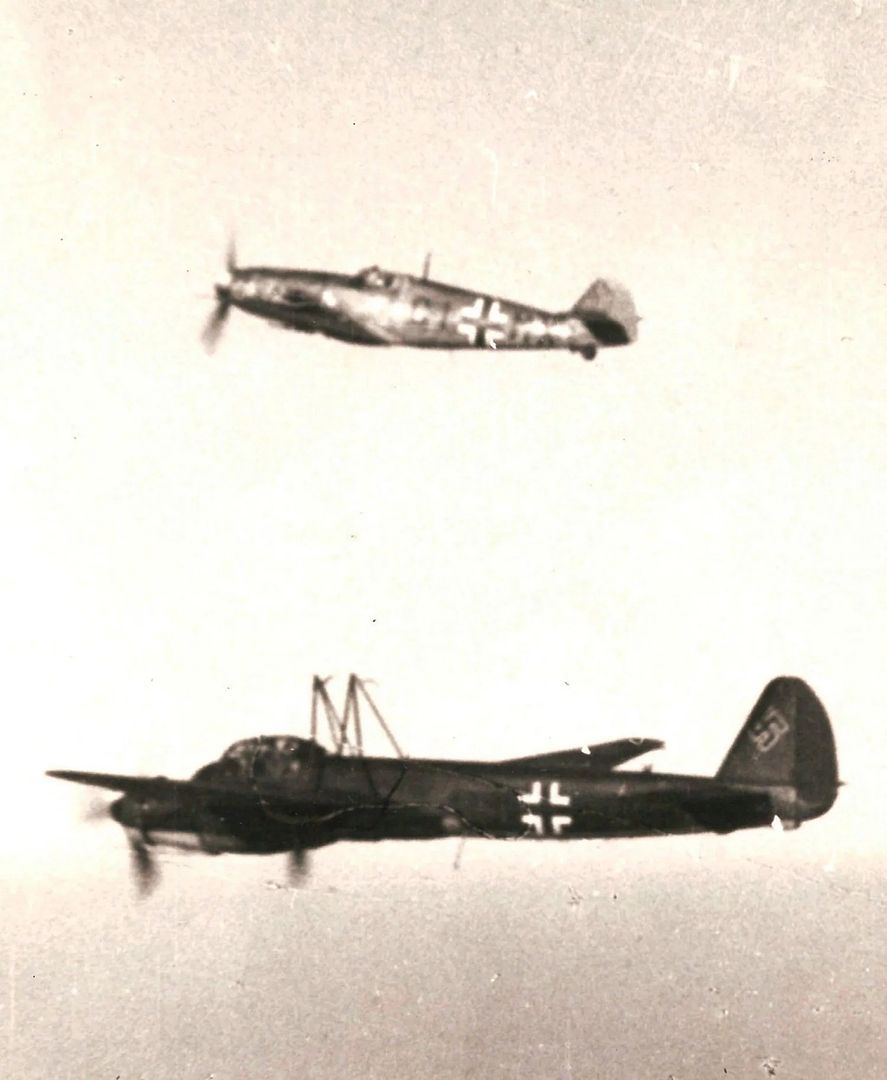
Mistel 1 - Ju 88A-4 and Bf 109F-4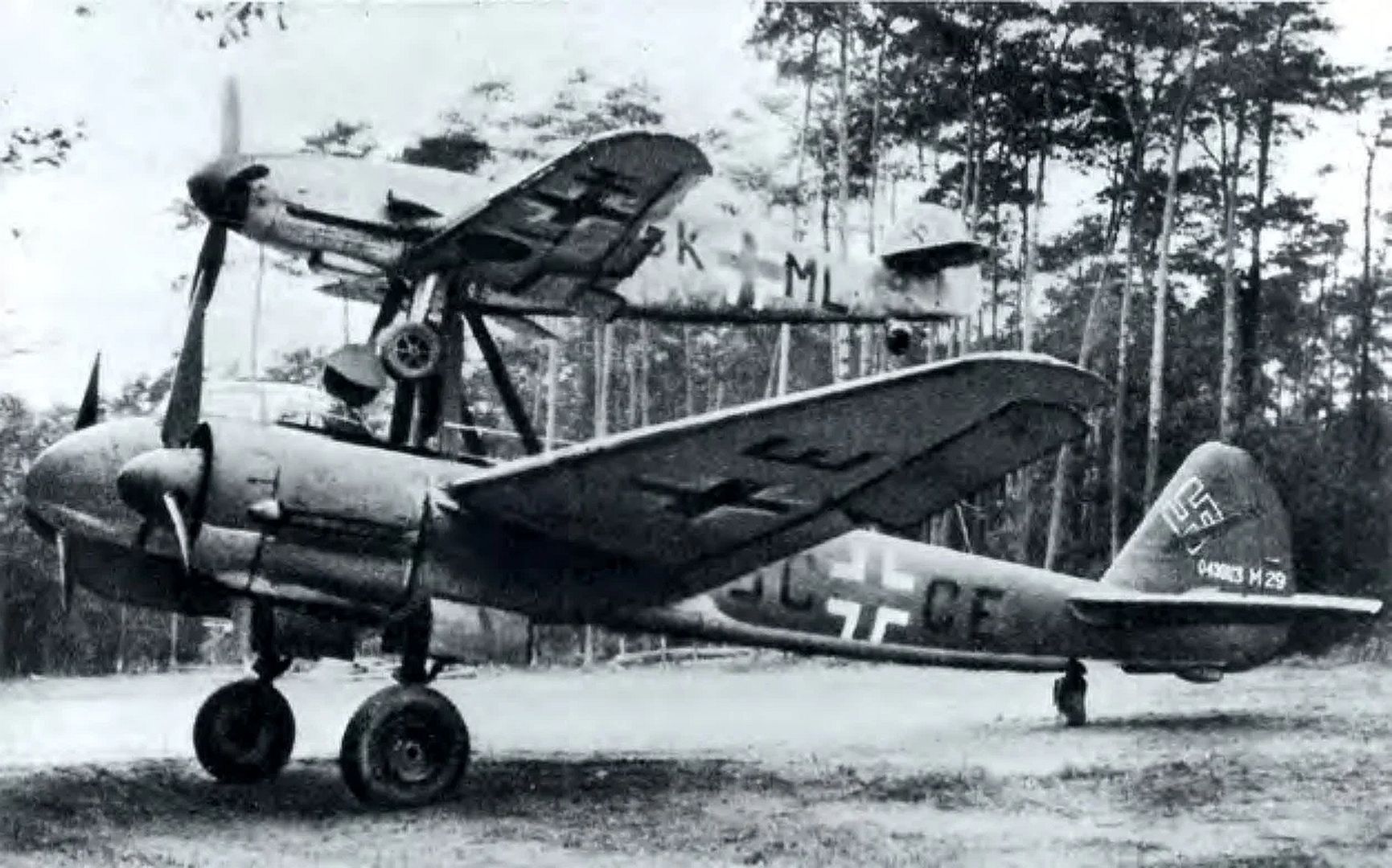

Mistel S1 - Trainer version of Mistel 1
Mistel 2 - Ju 88G-l and Fw 190A-8 or F-8
Mistel S2 - Trainer version of Mistel 2
Mistel 3A - Ju 88A-4 and Fw 190A-8
Mistel S3A - Trainer version of Mistel 3A
Mistel 3B - Ju 88H-4 and Fw 190A-8
Mistel 3C - Ju 88G-10 and Fw 190F-8
Mistel Führungsmaschine - Ju 88 A-4/H-4 and Fw 190 A-8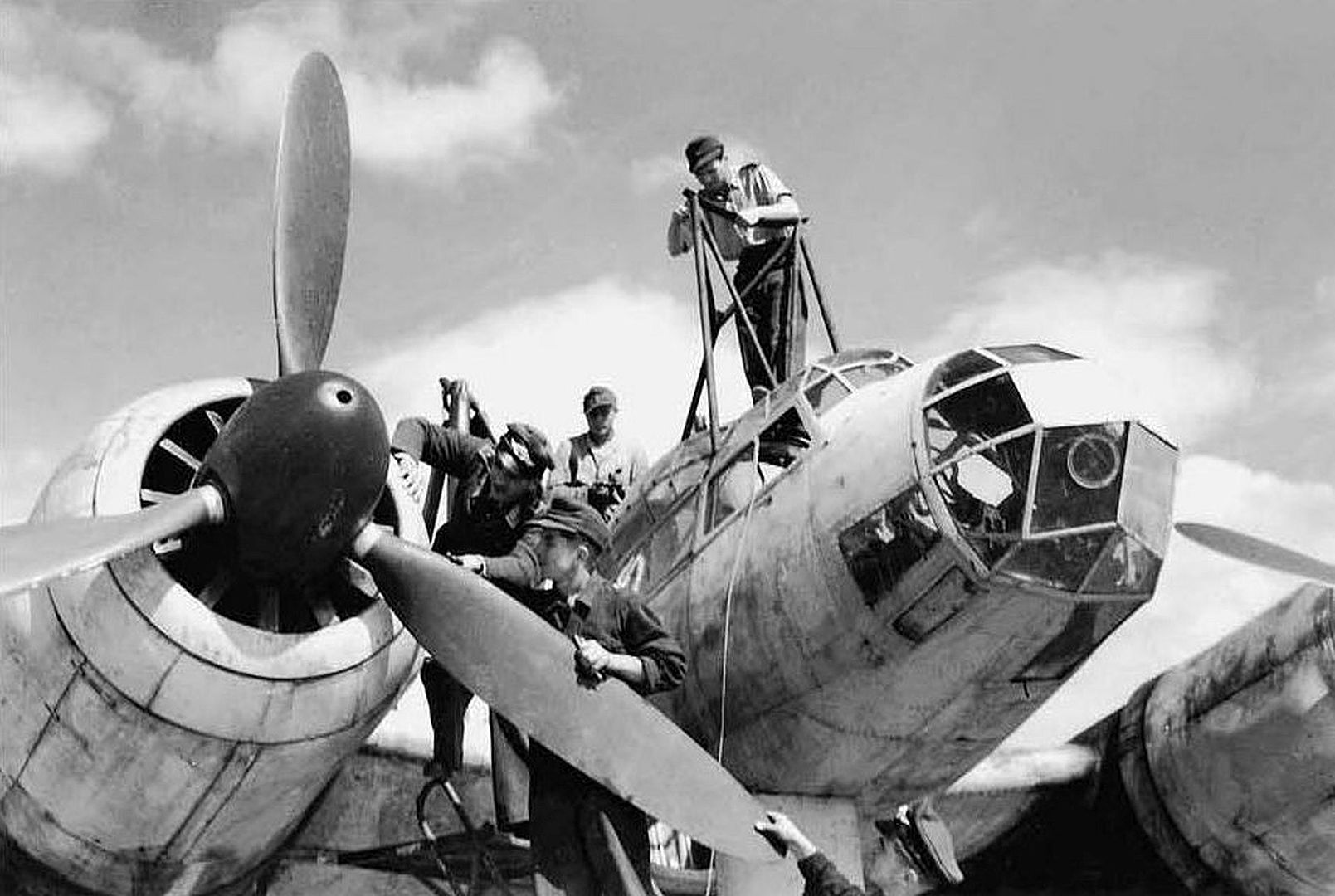

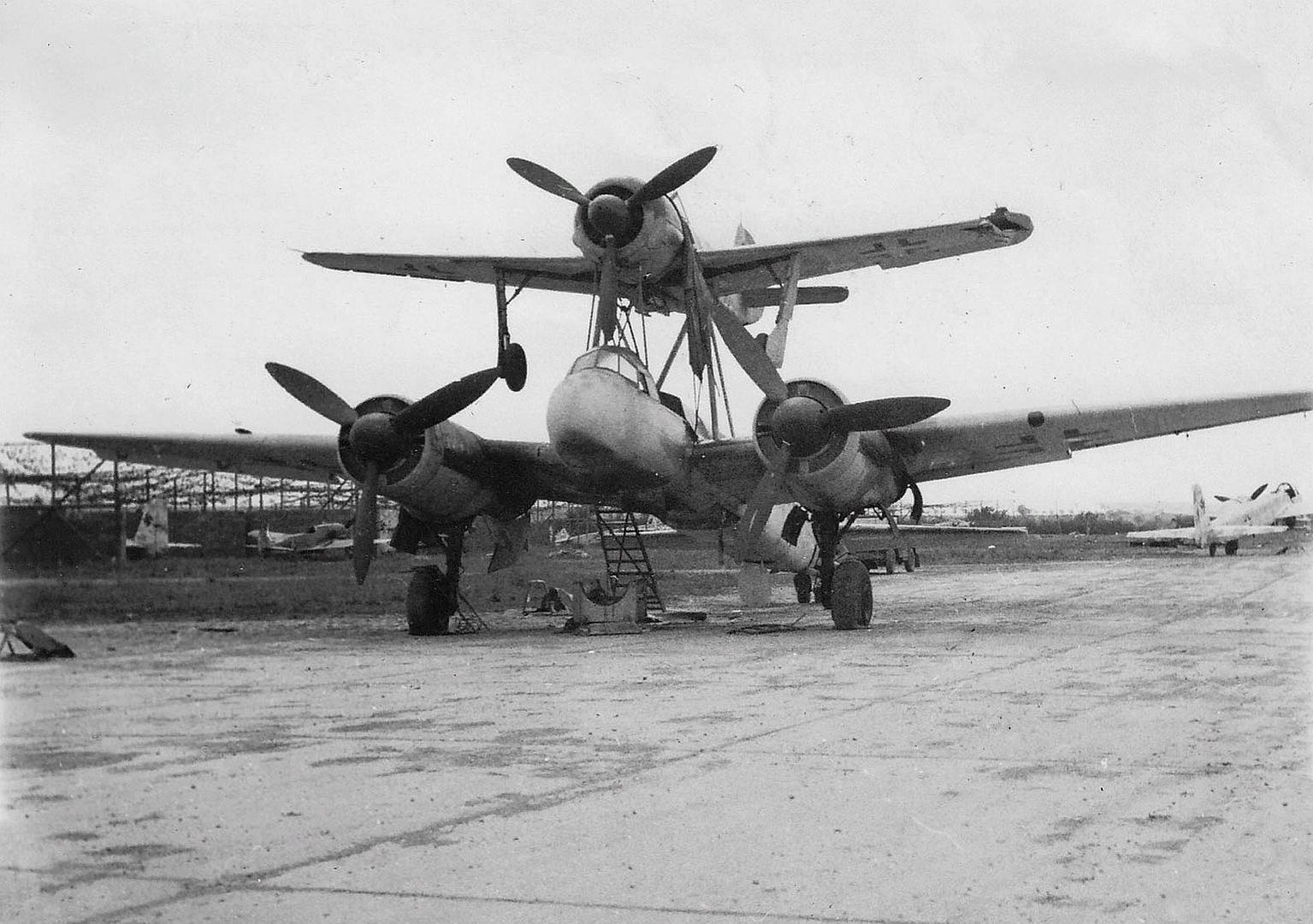
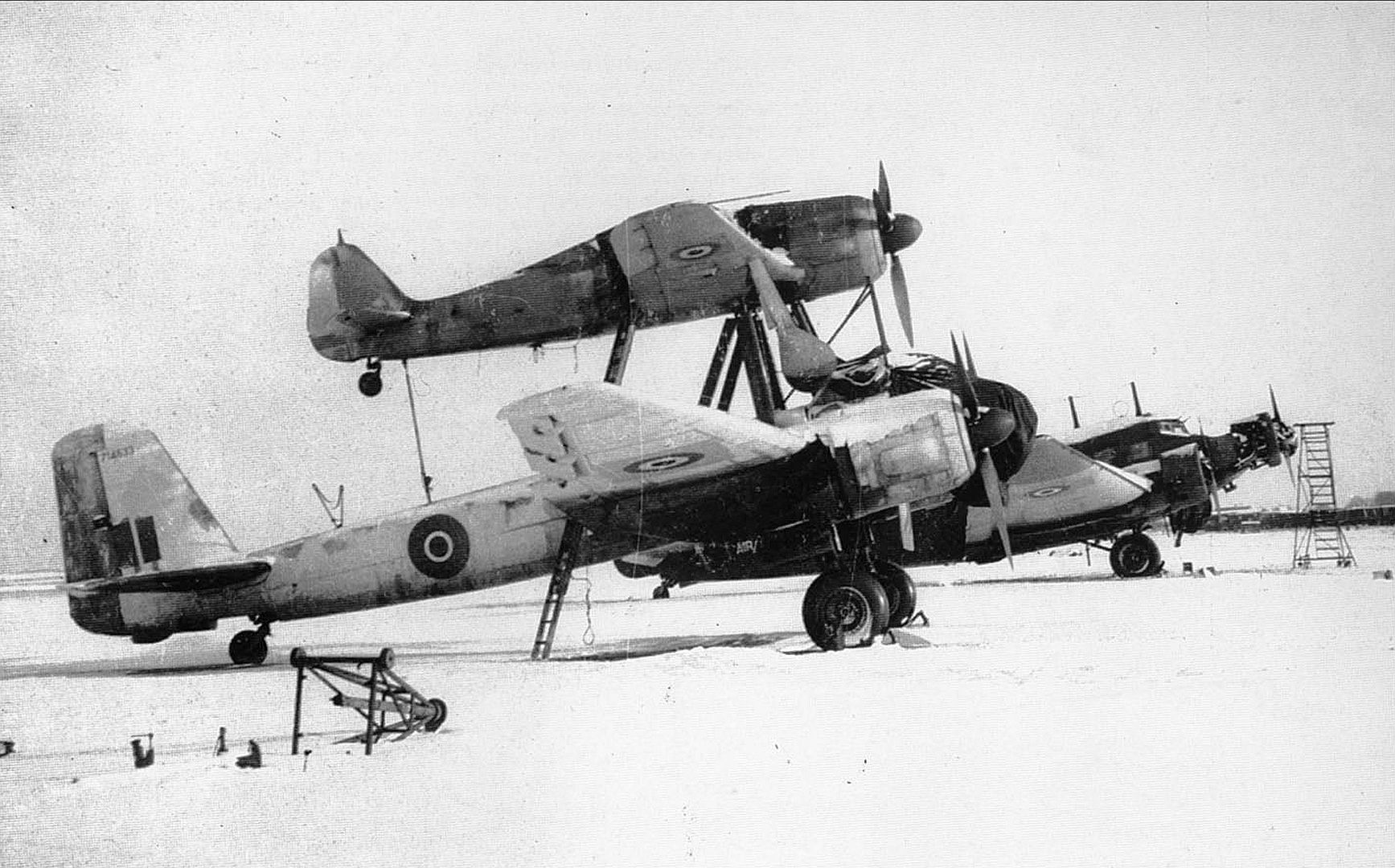


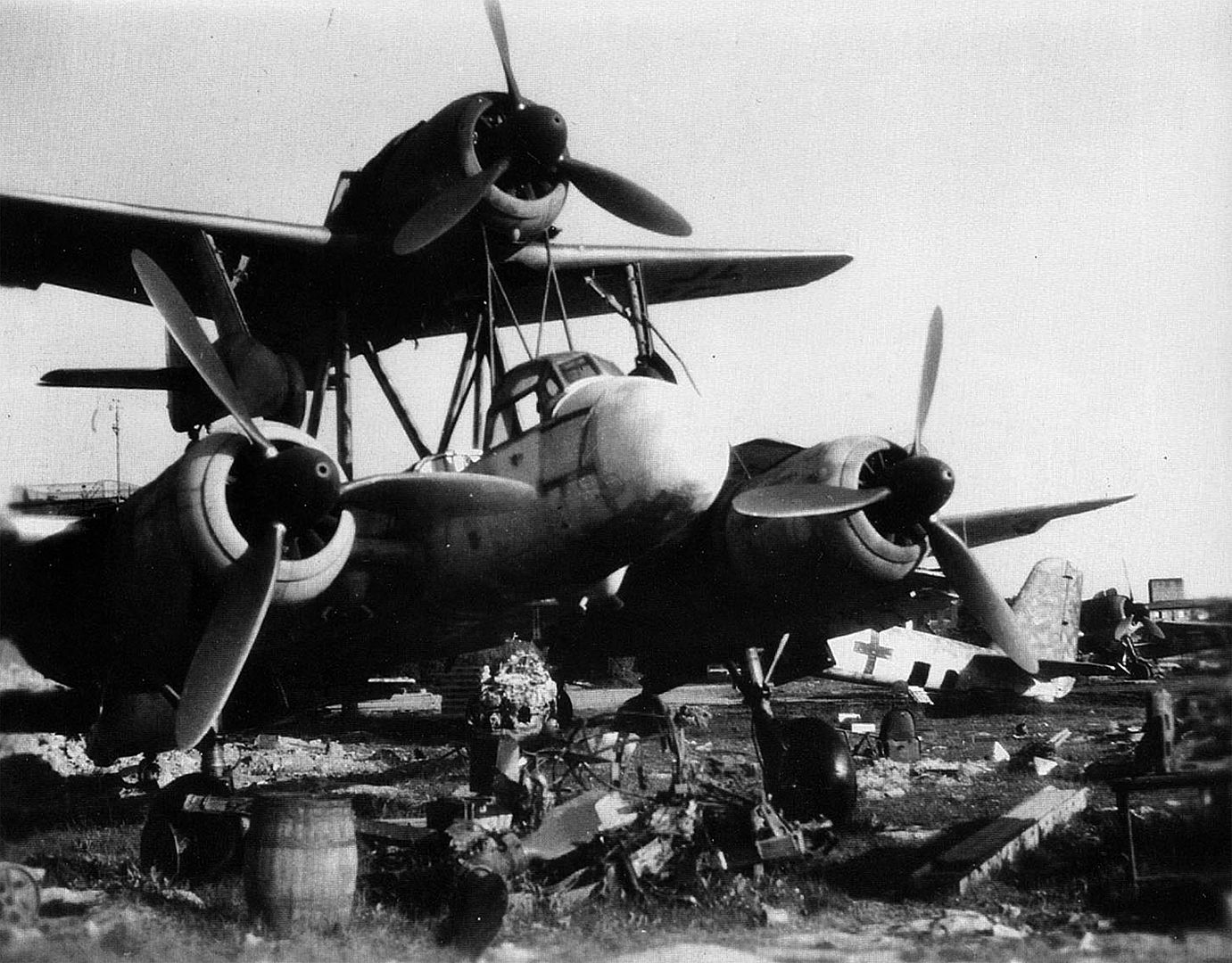
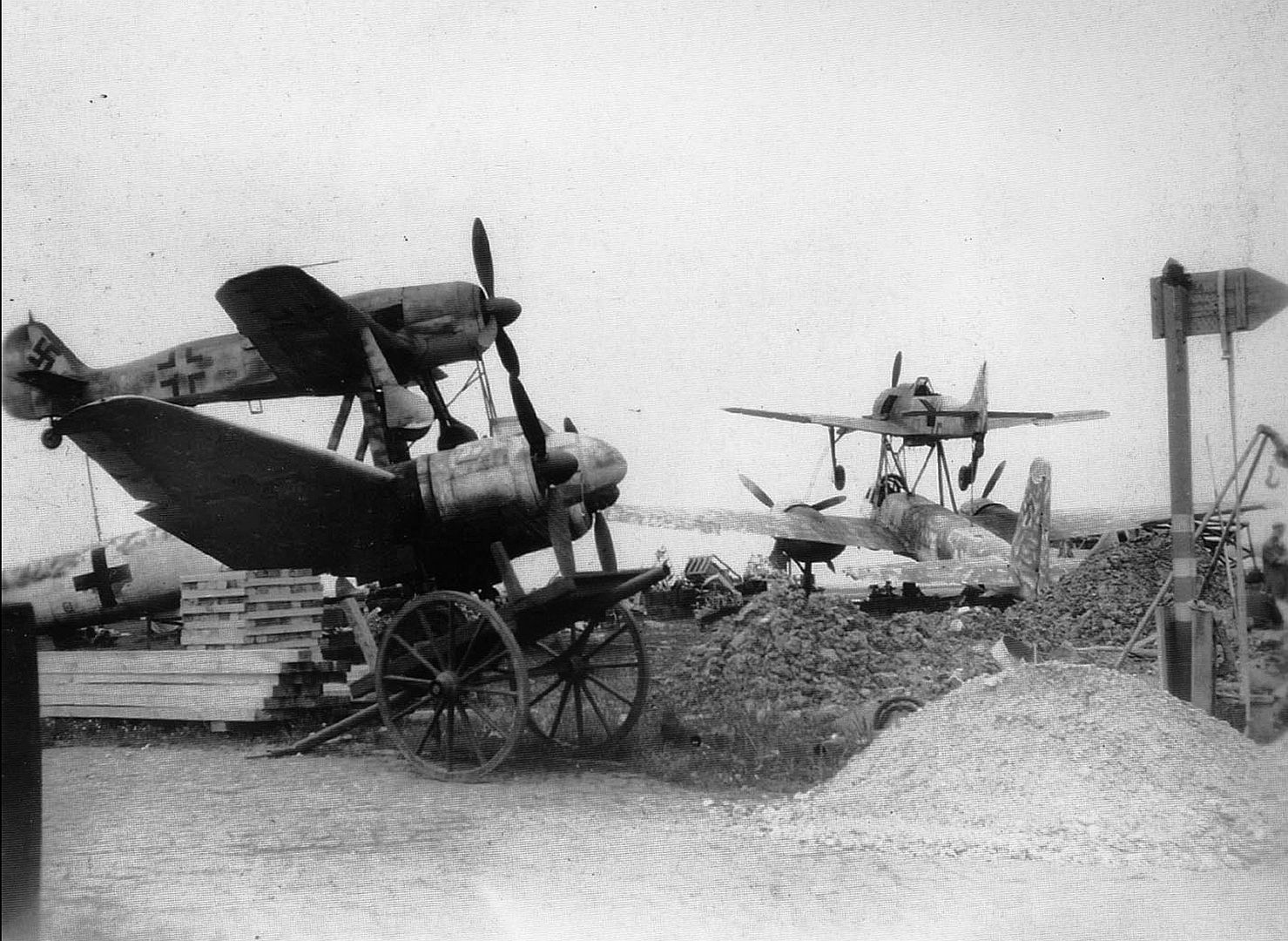
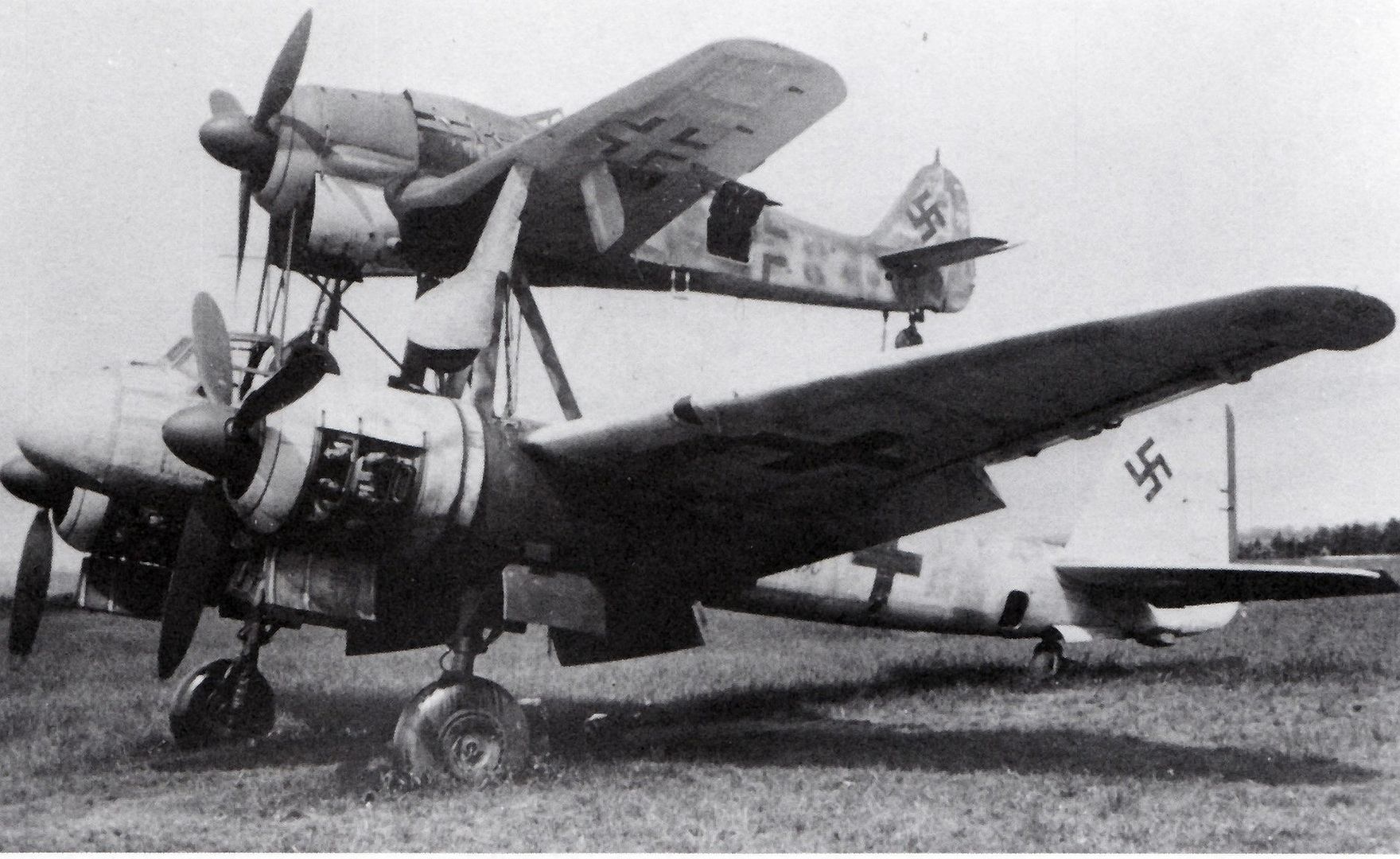
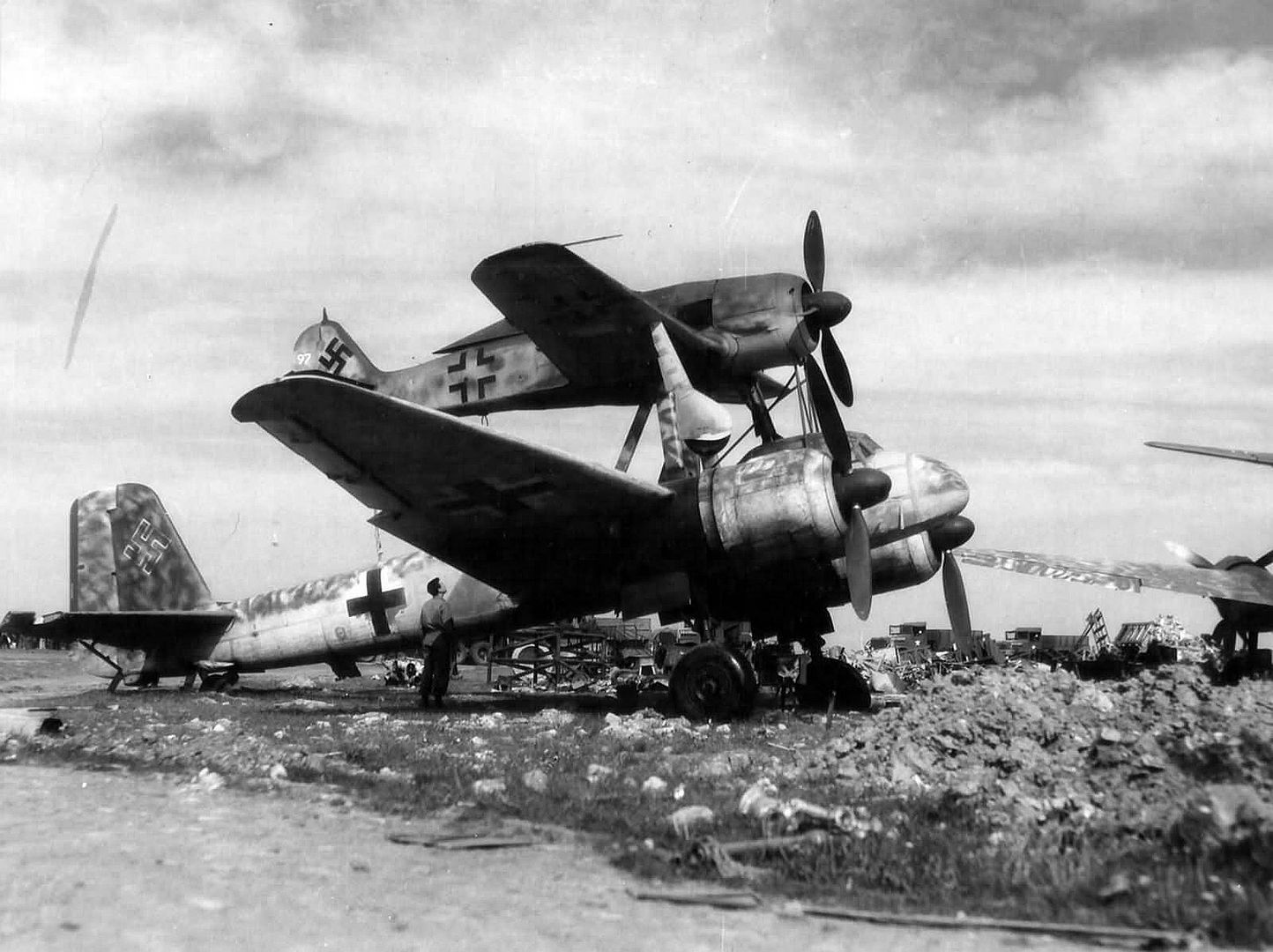
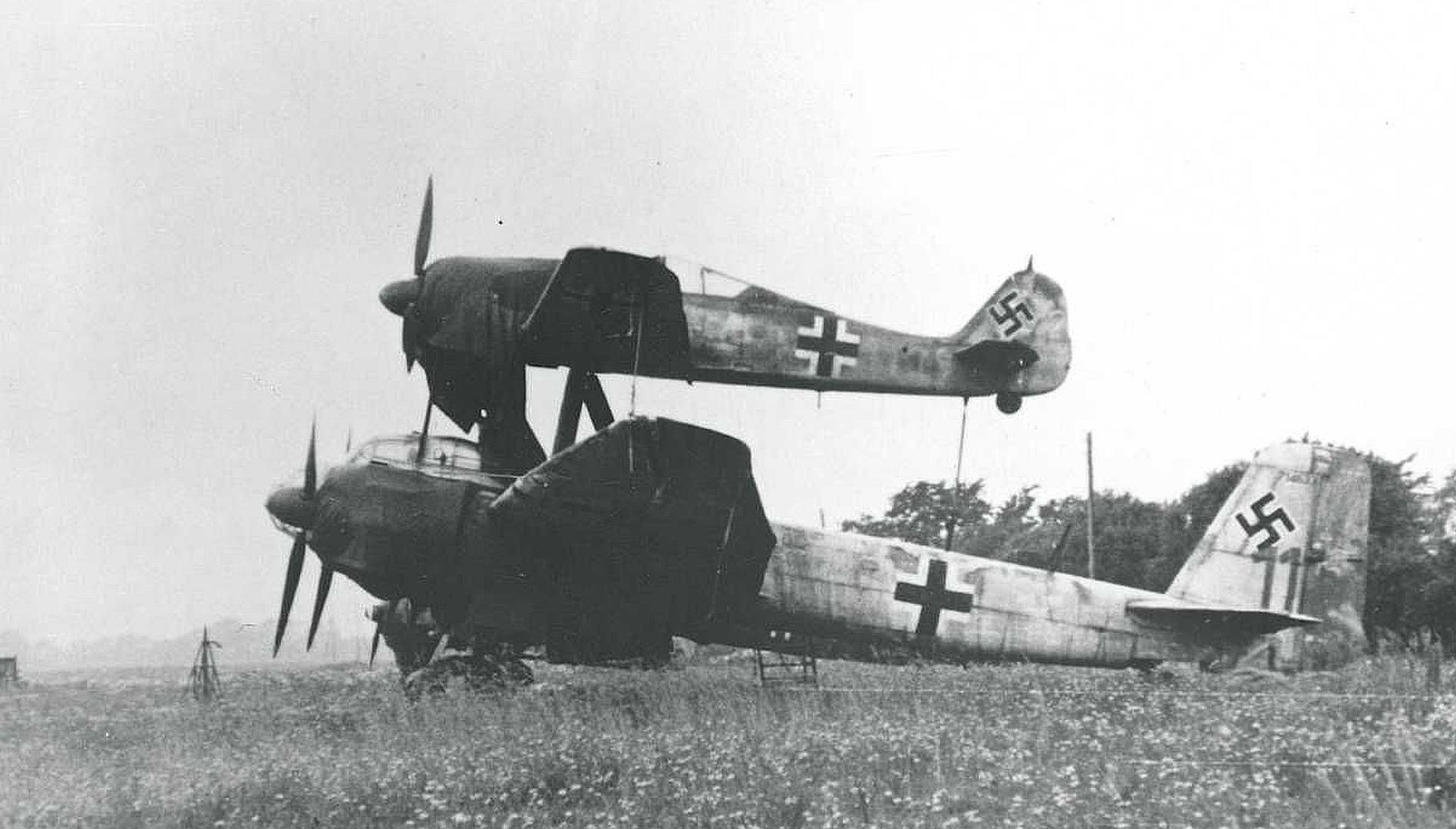
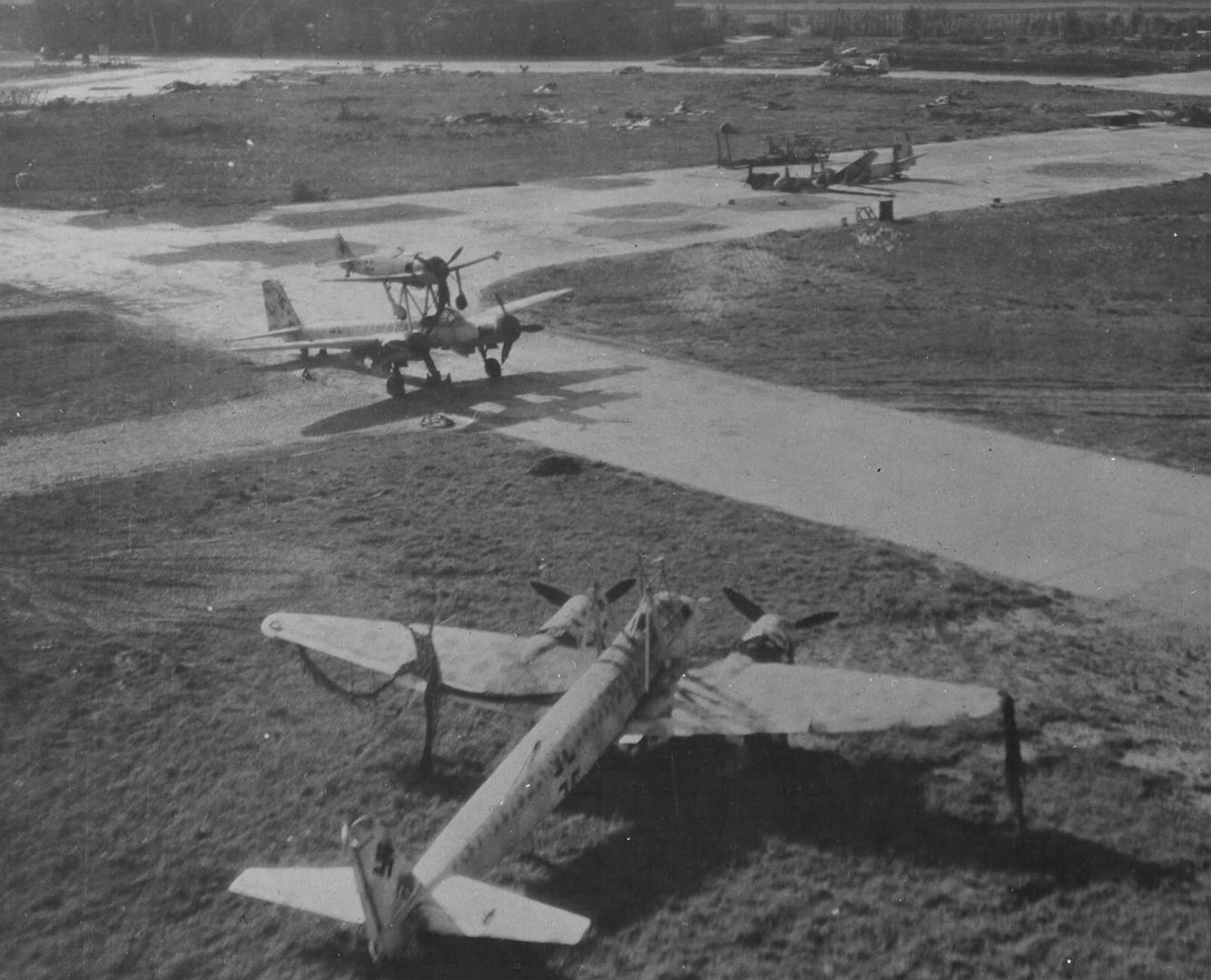

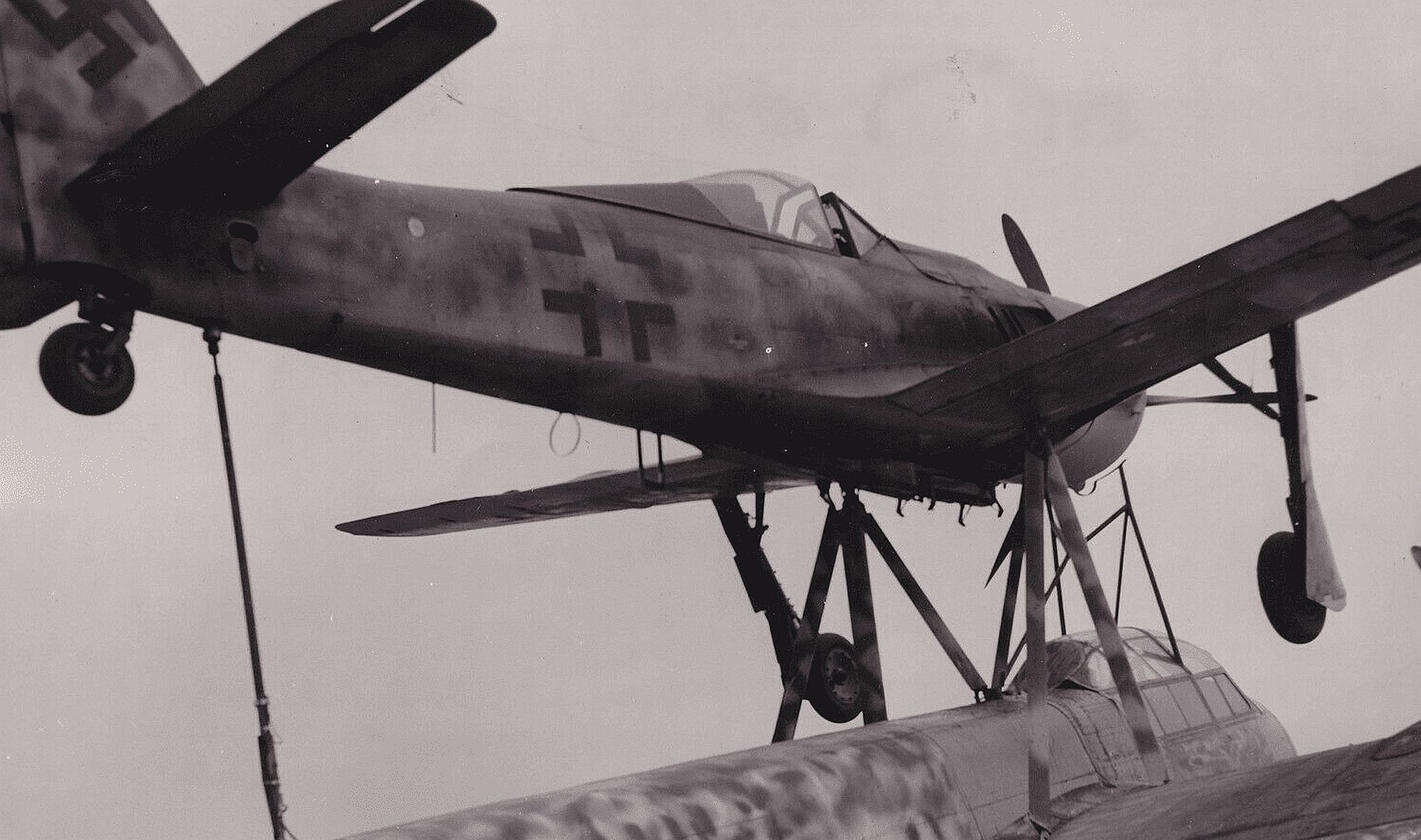
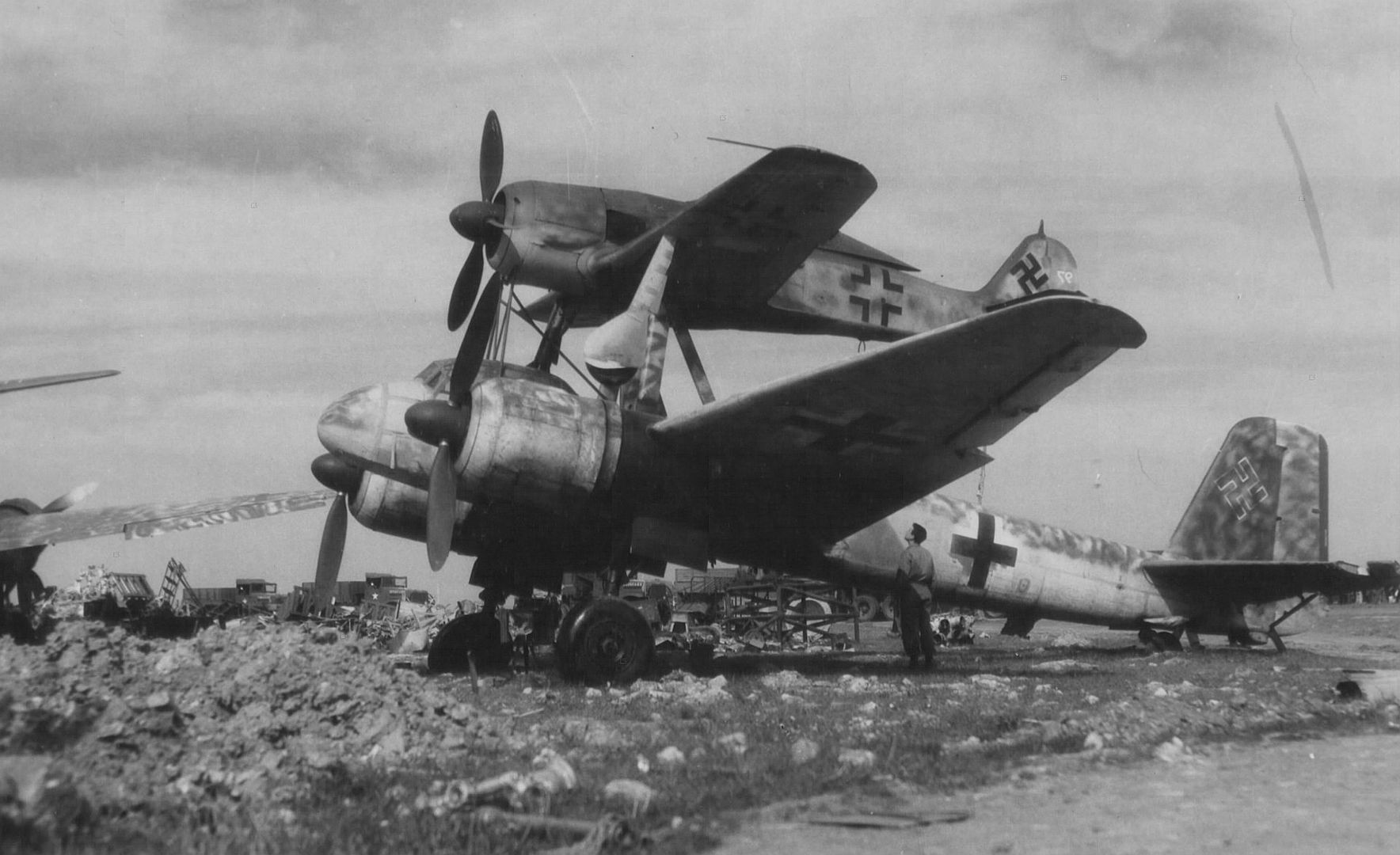
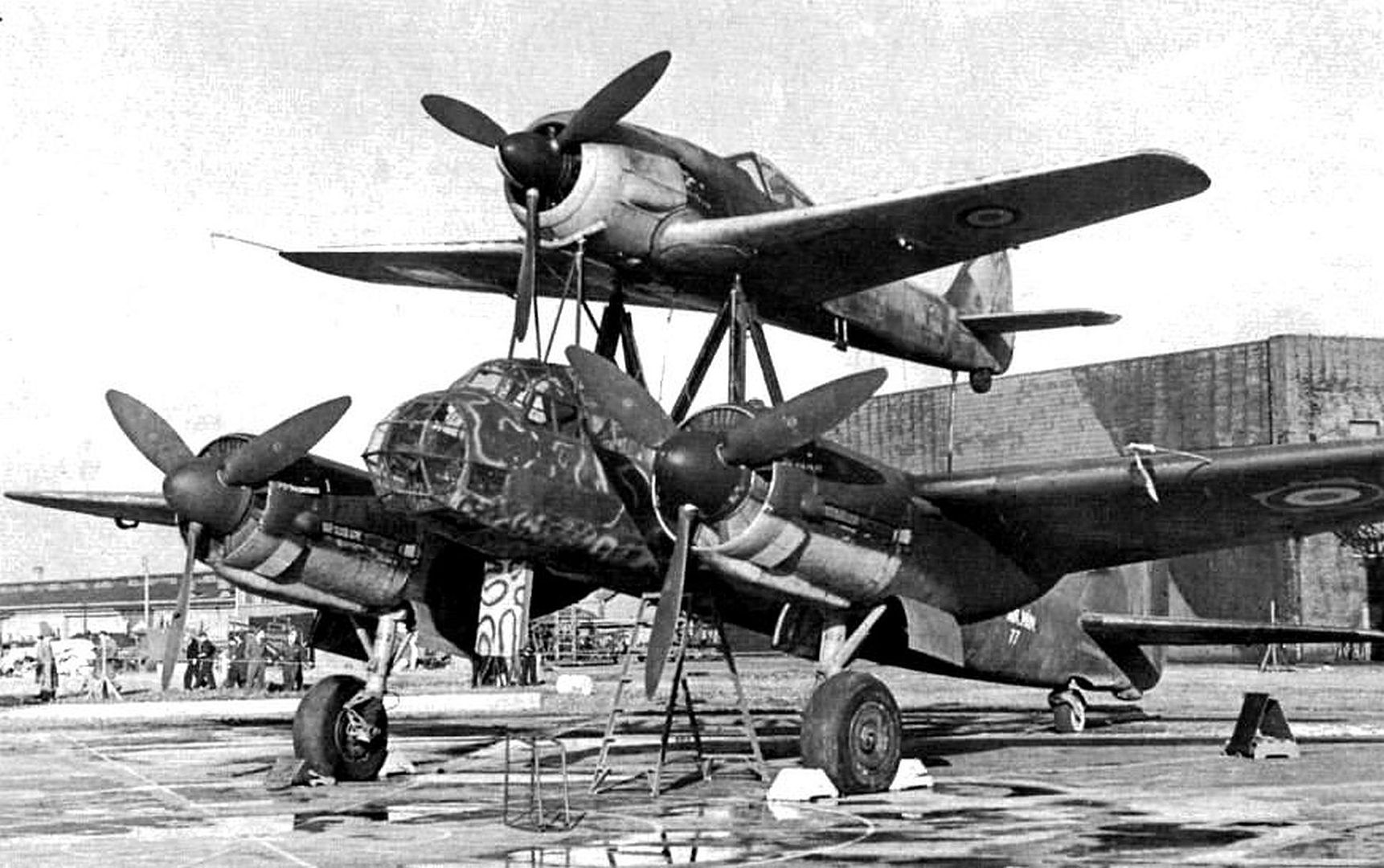
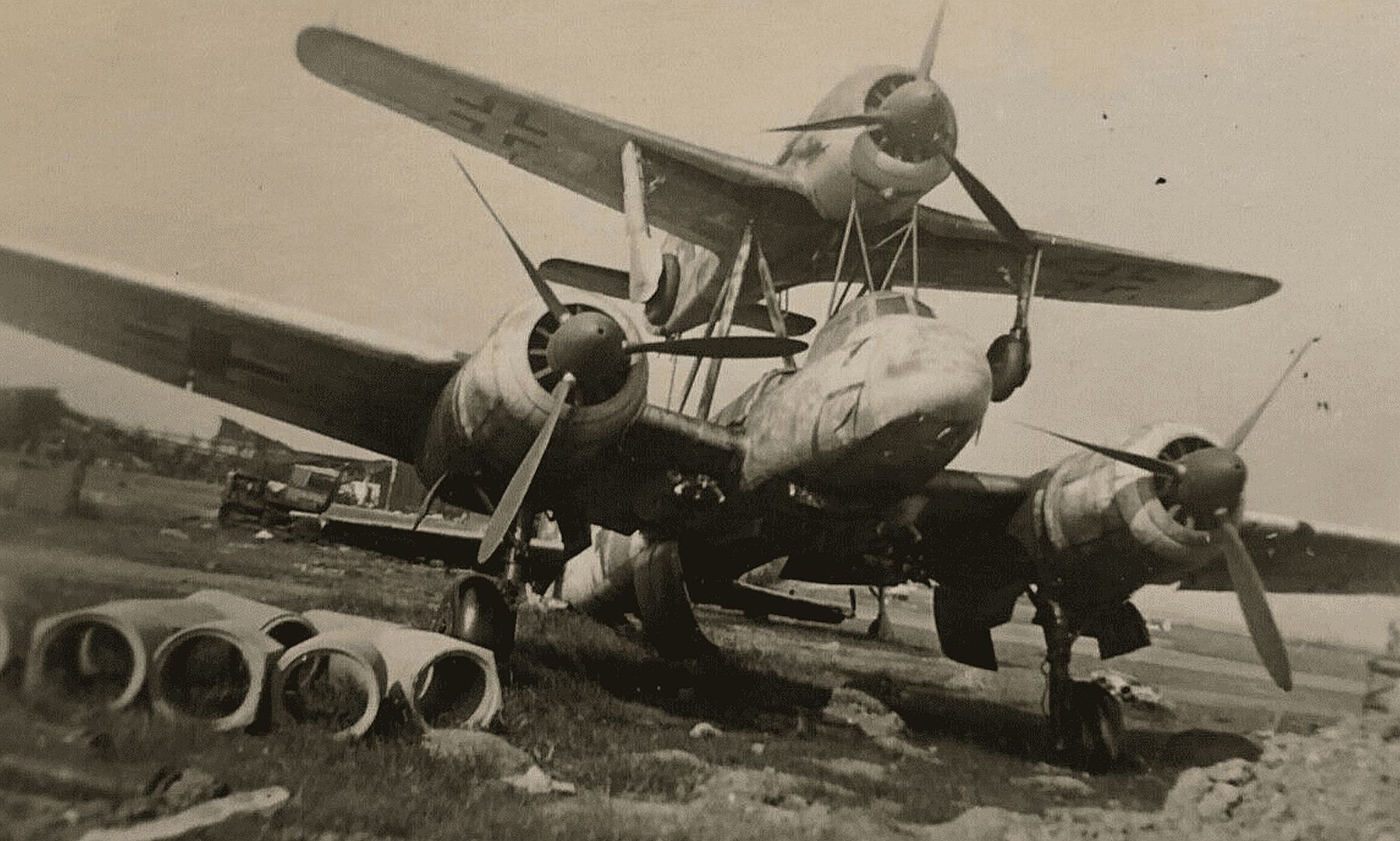
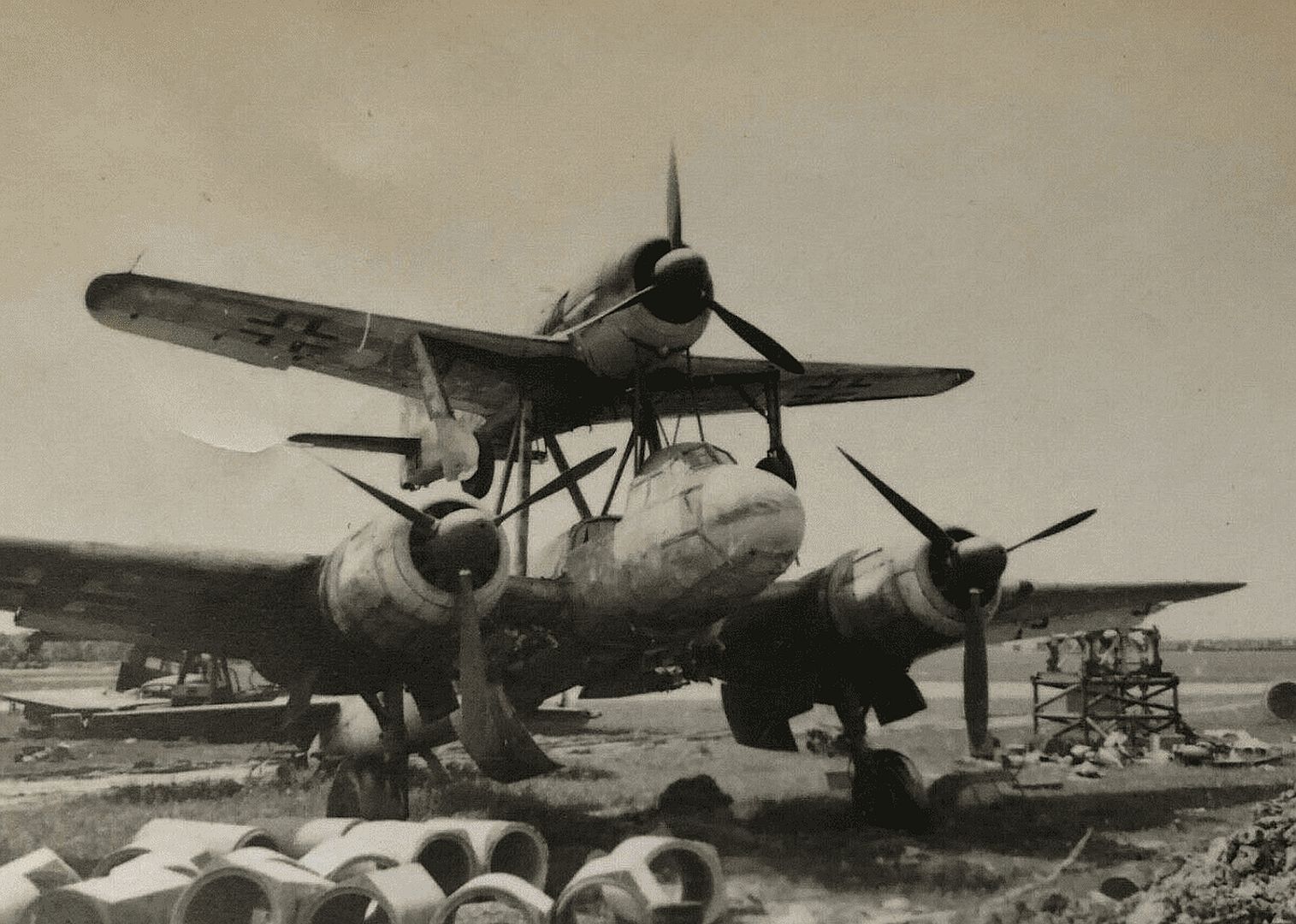
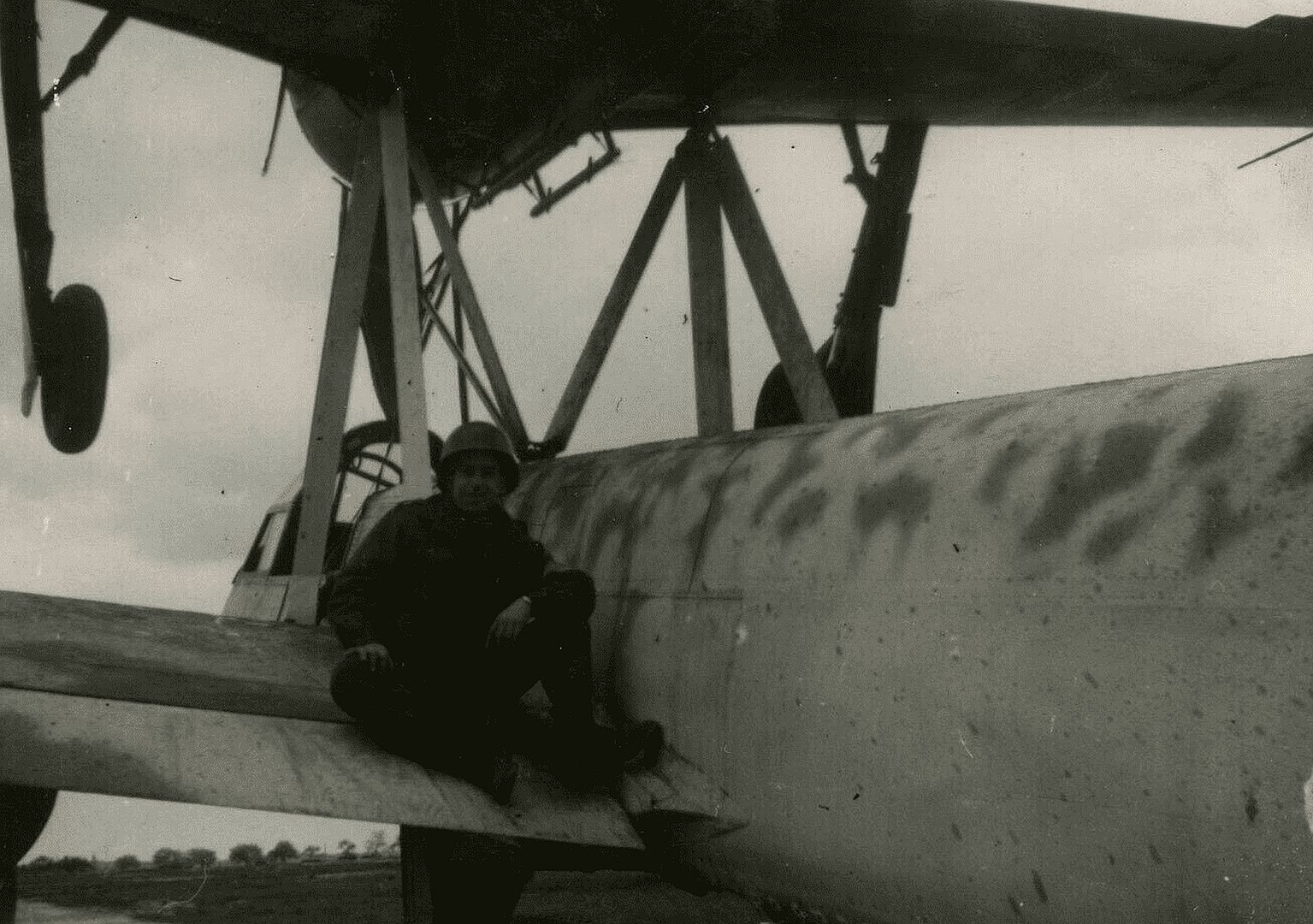
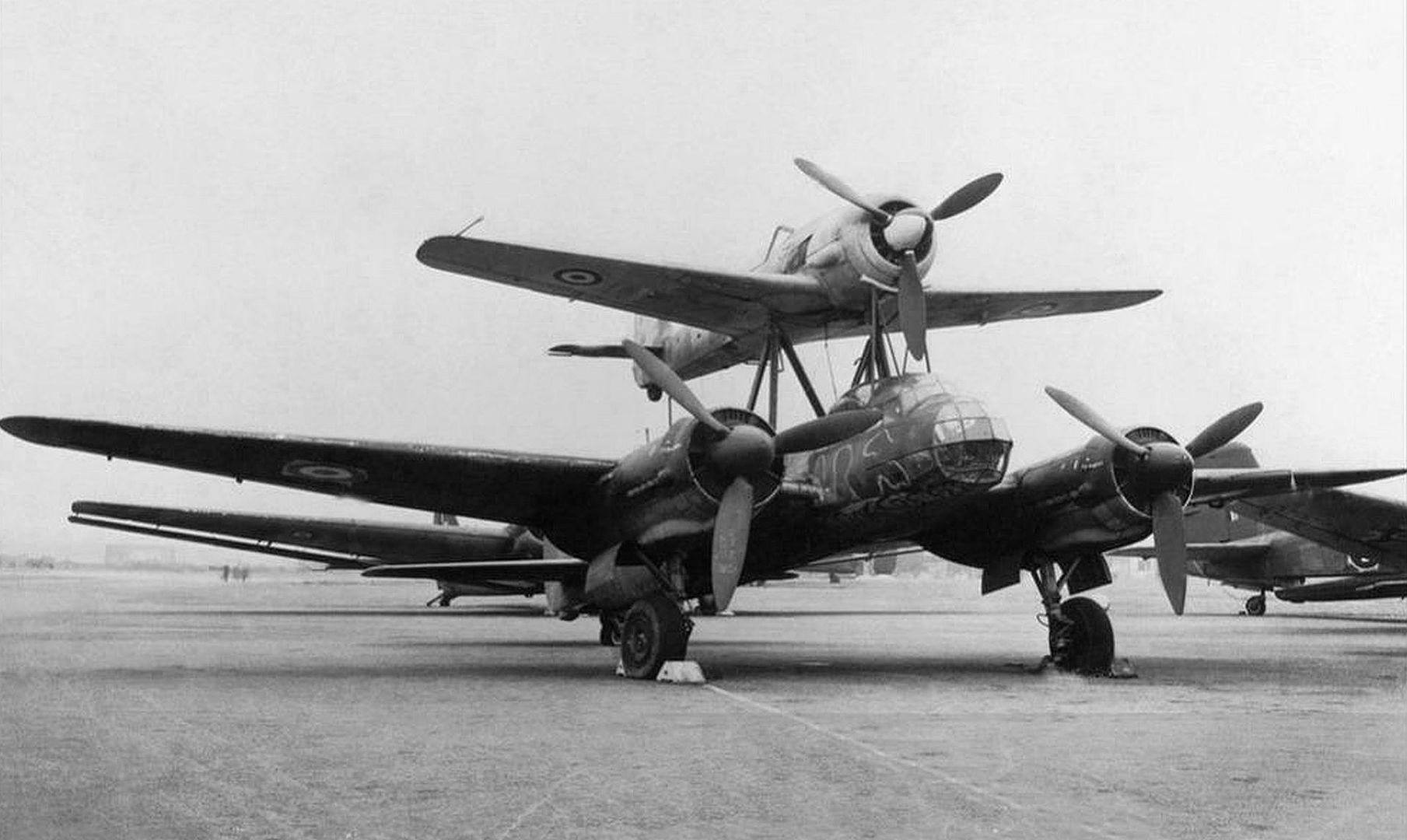
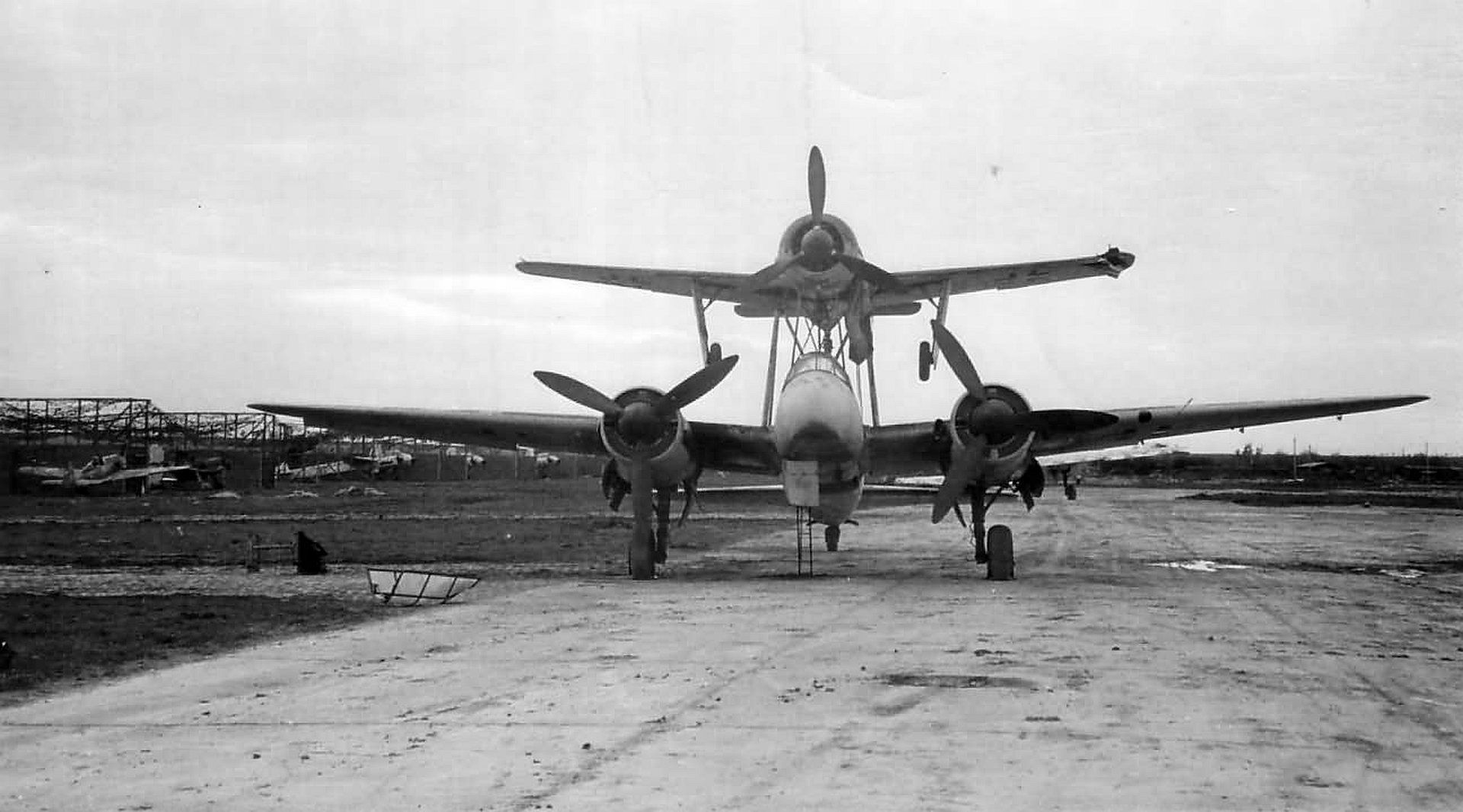
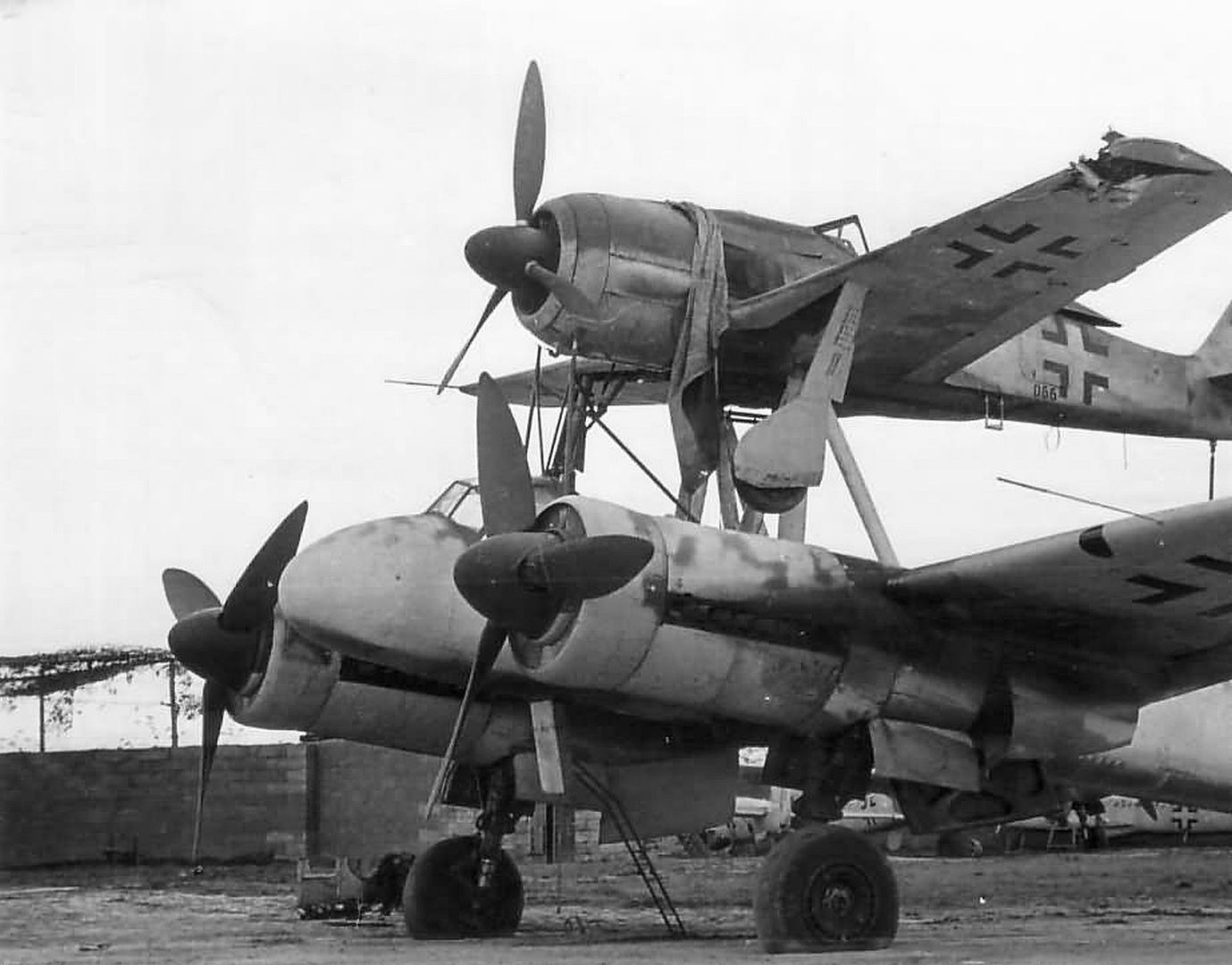

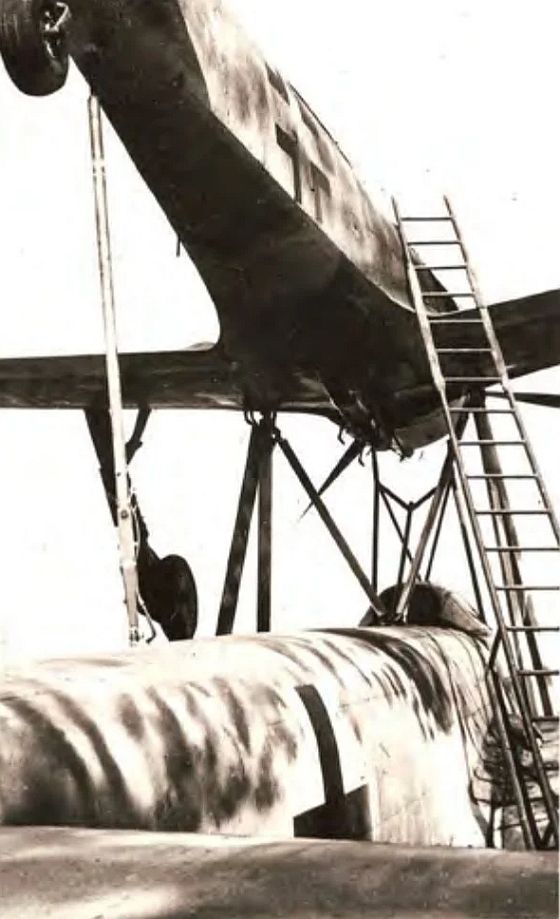

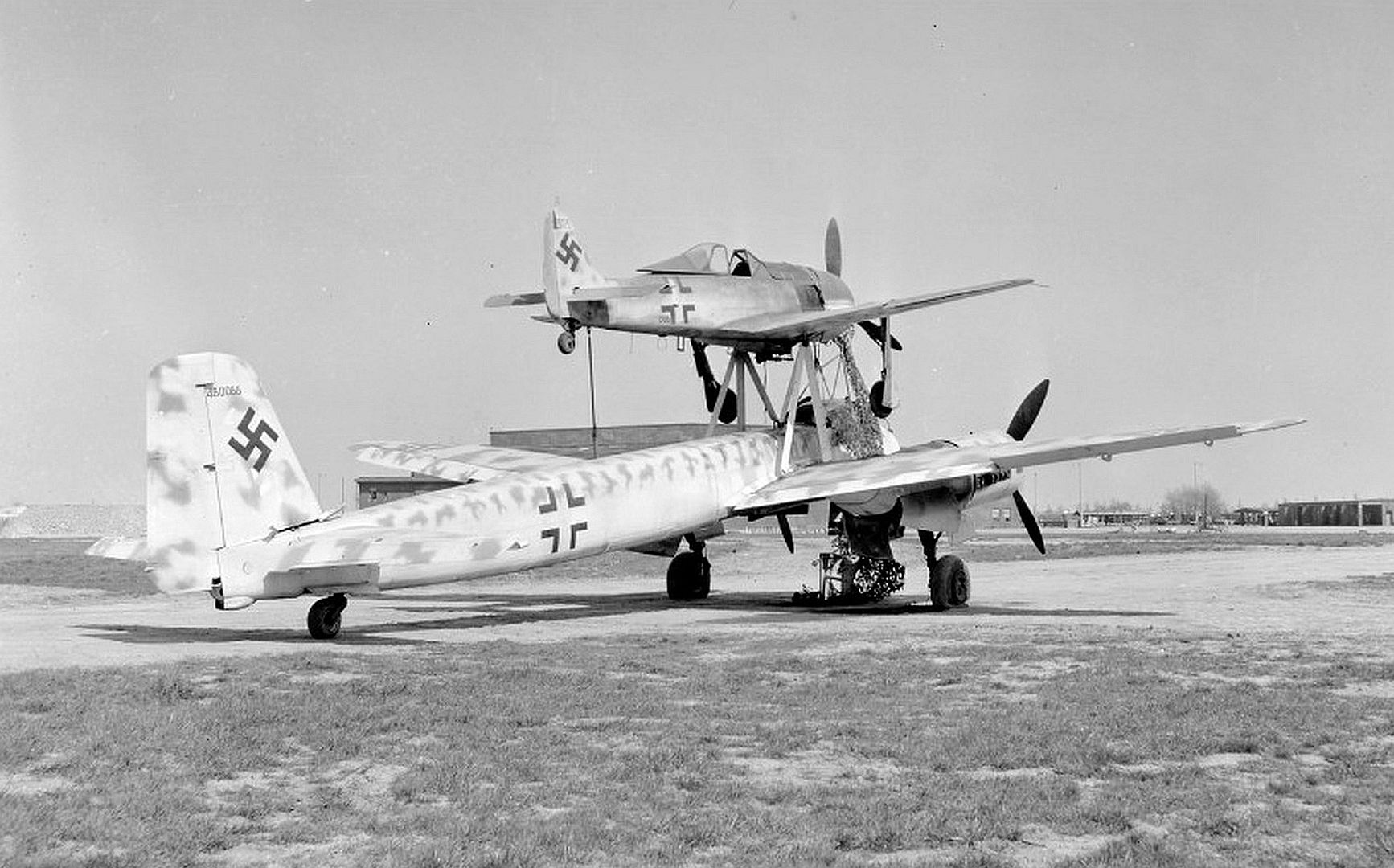
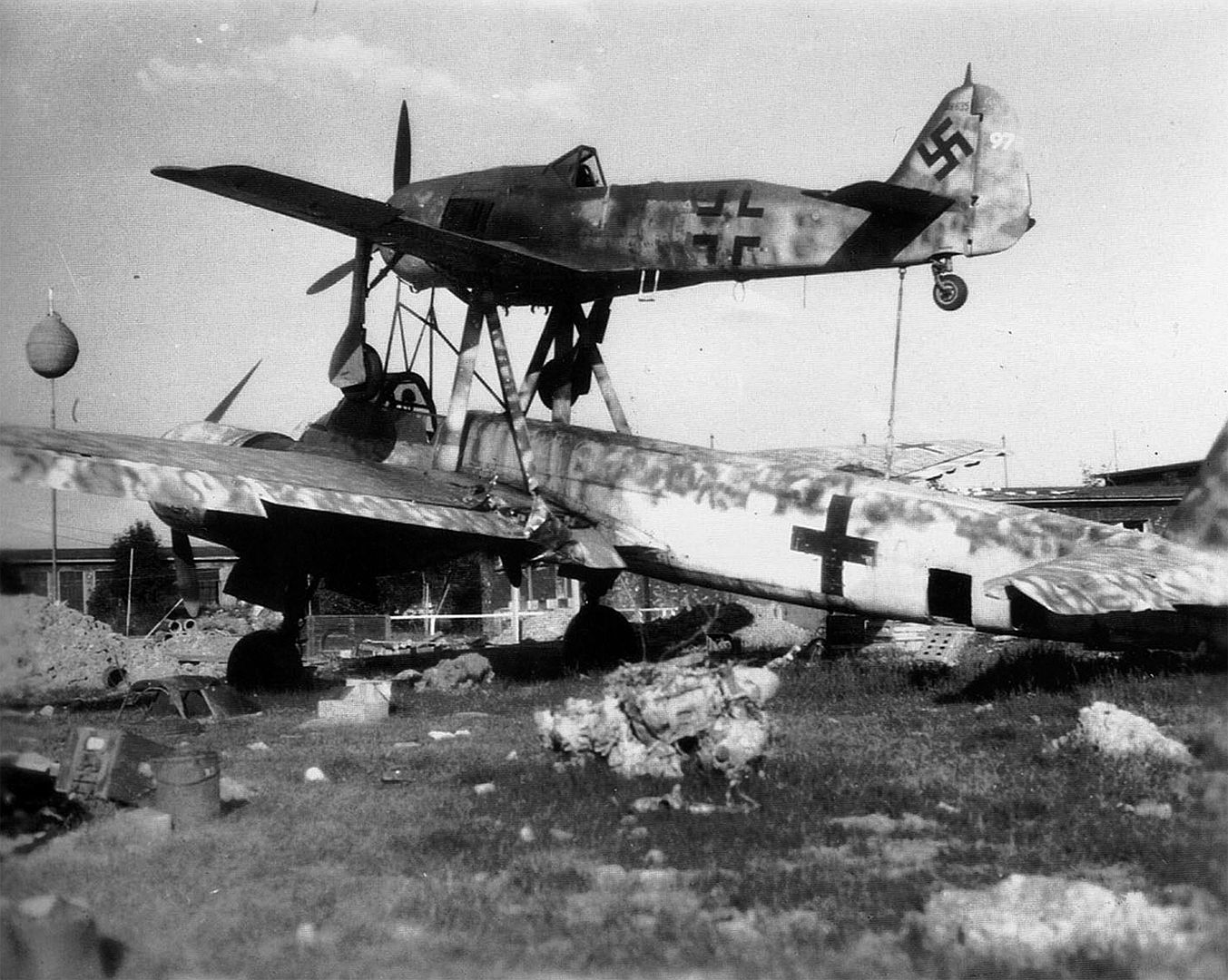
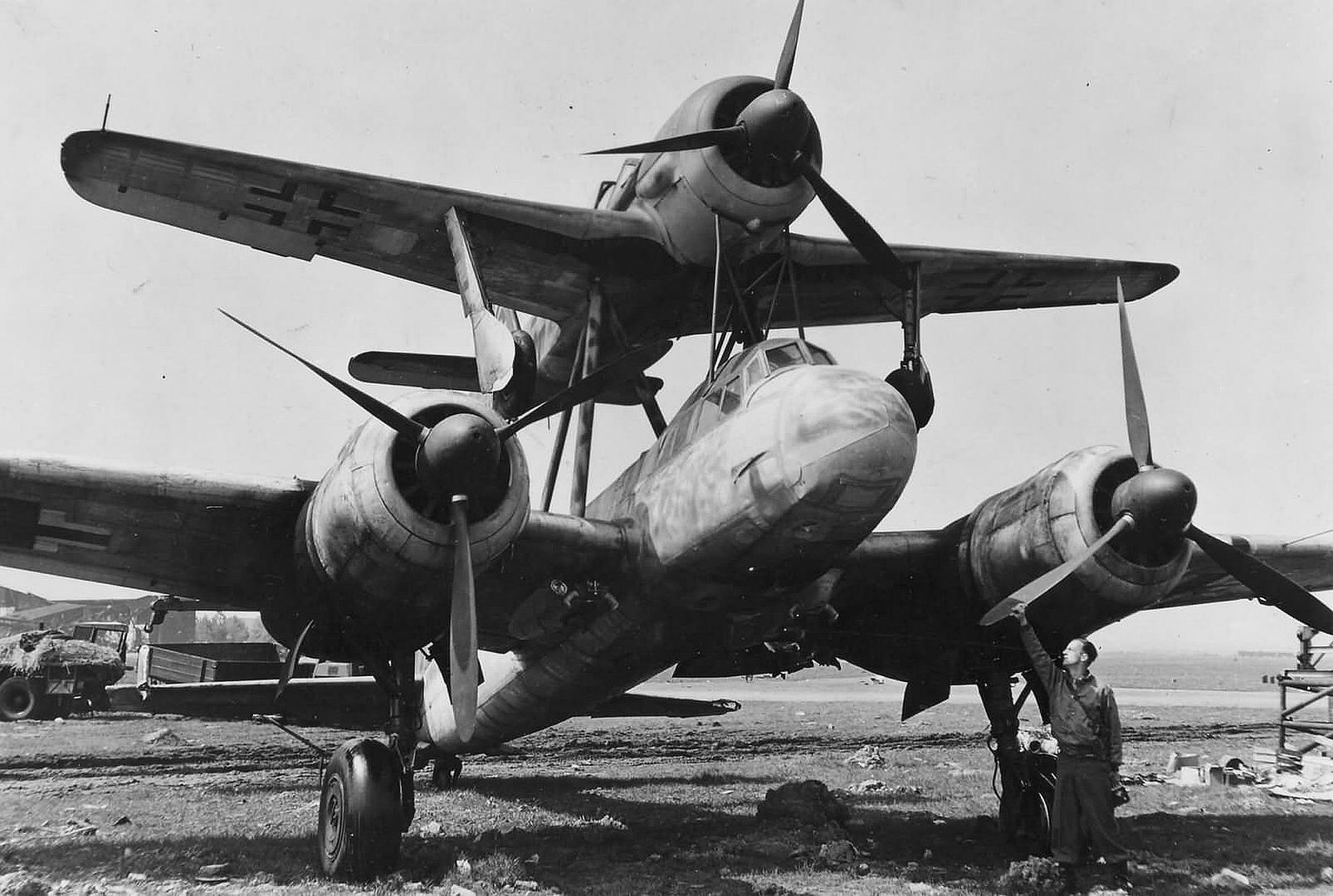
.jpg?width=1920&height=1080&fit=bounds)
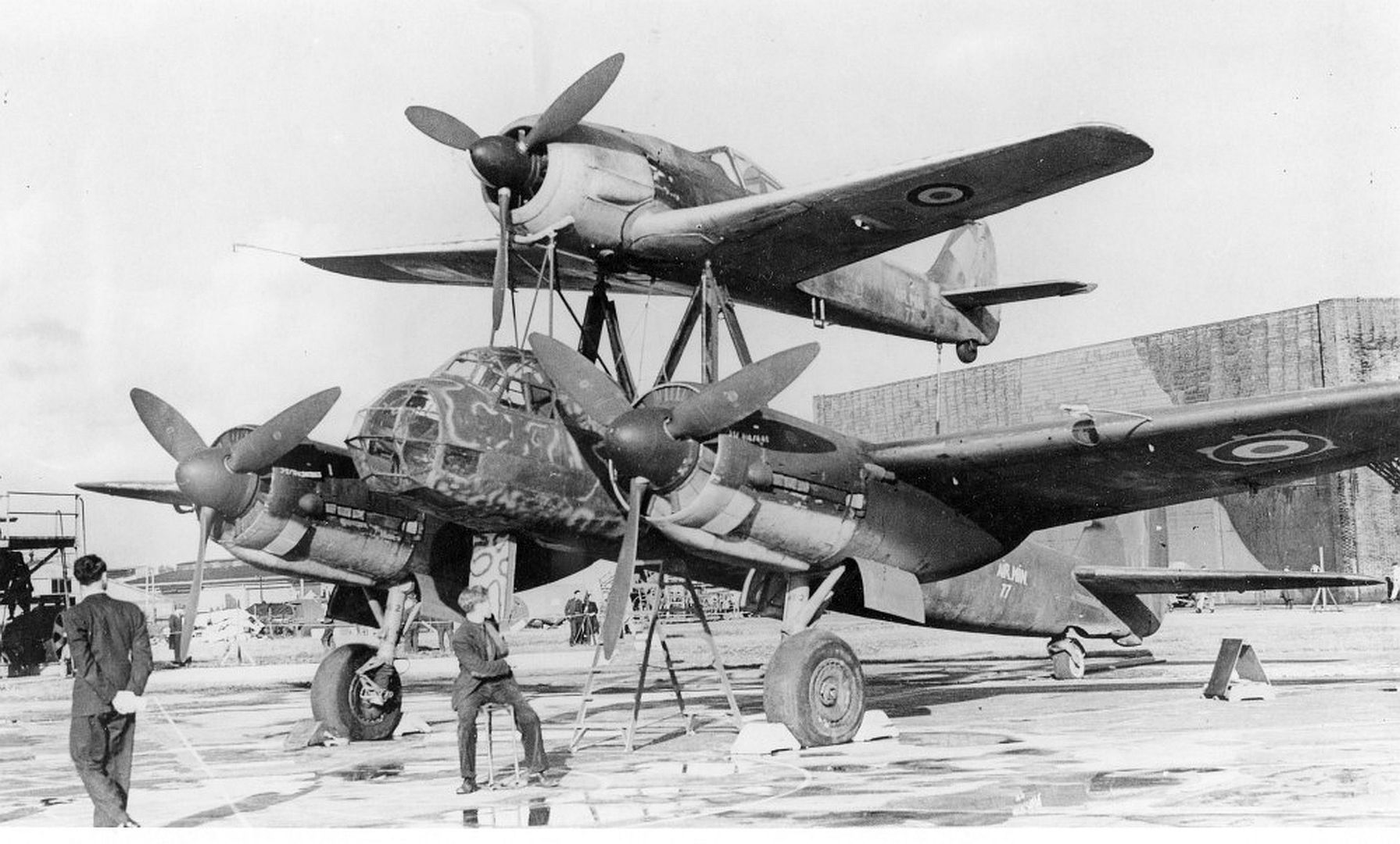
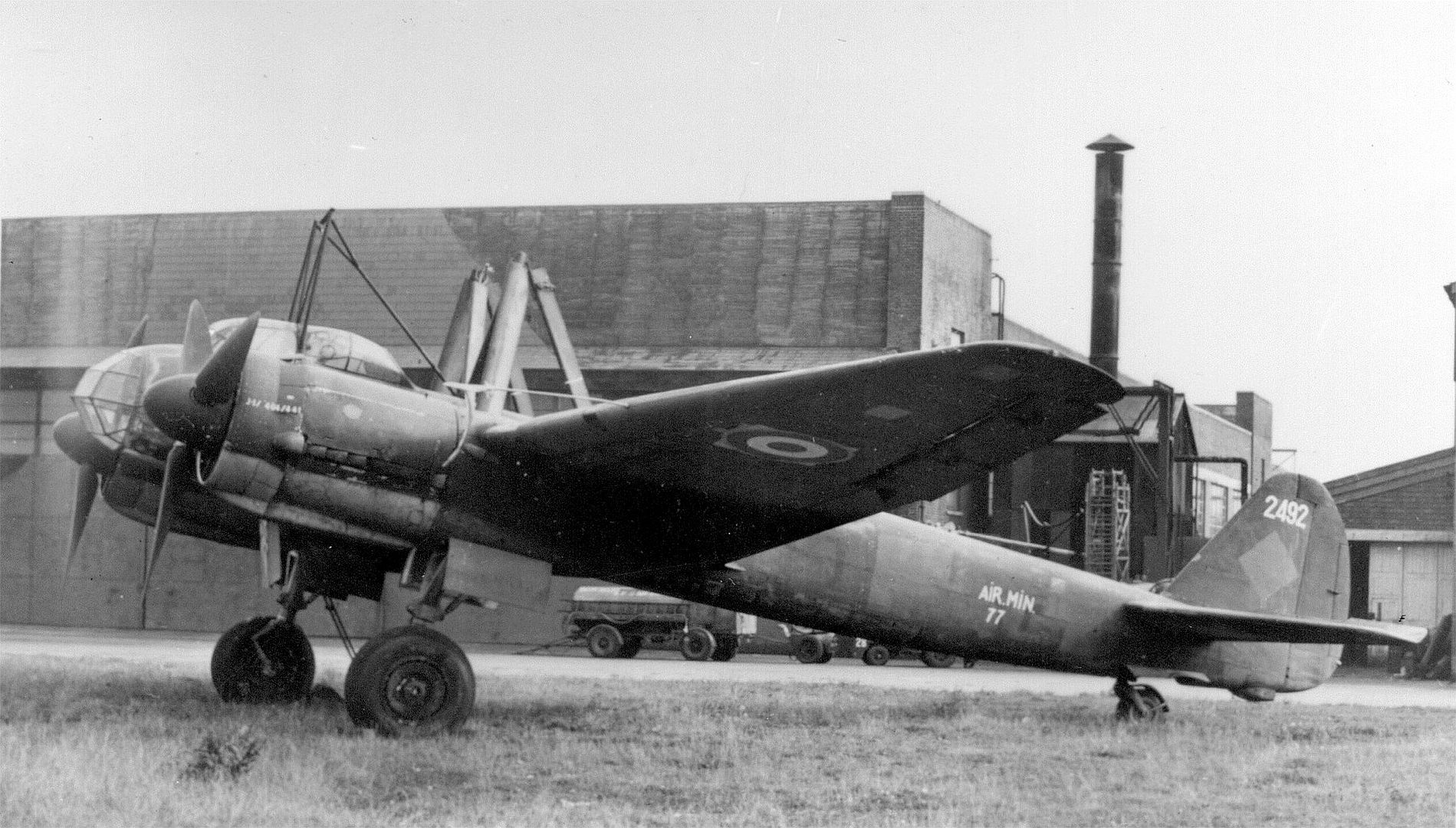
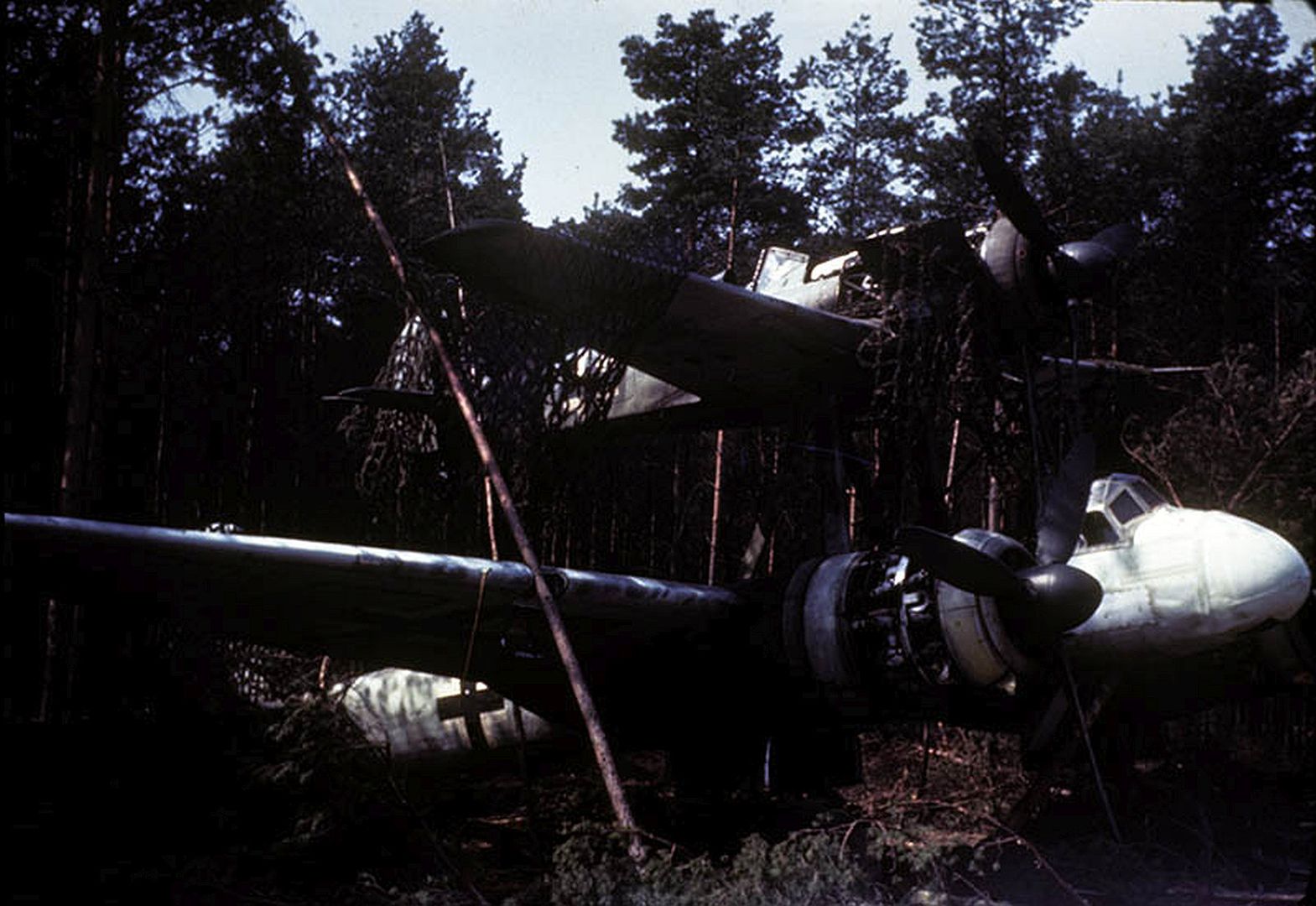
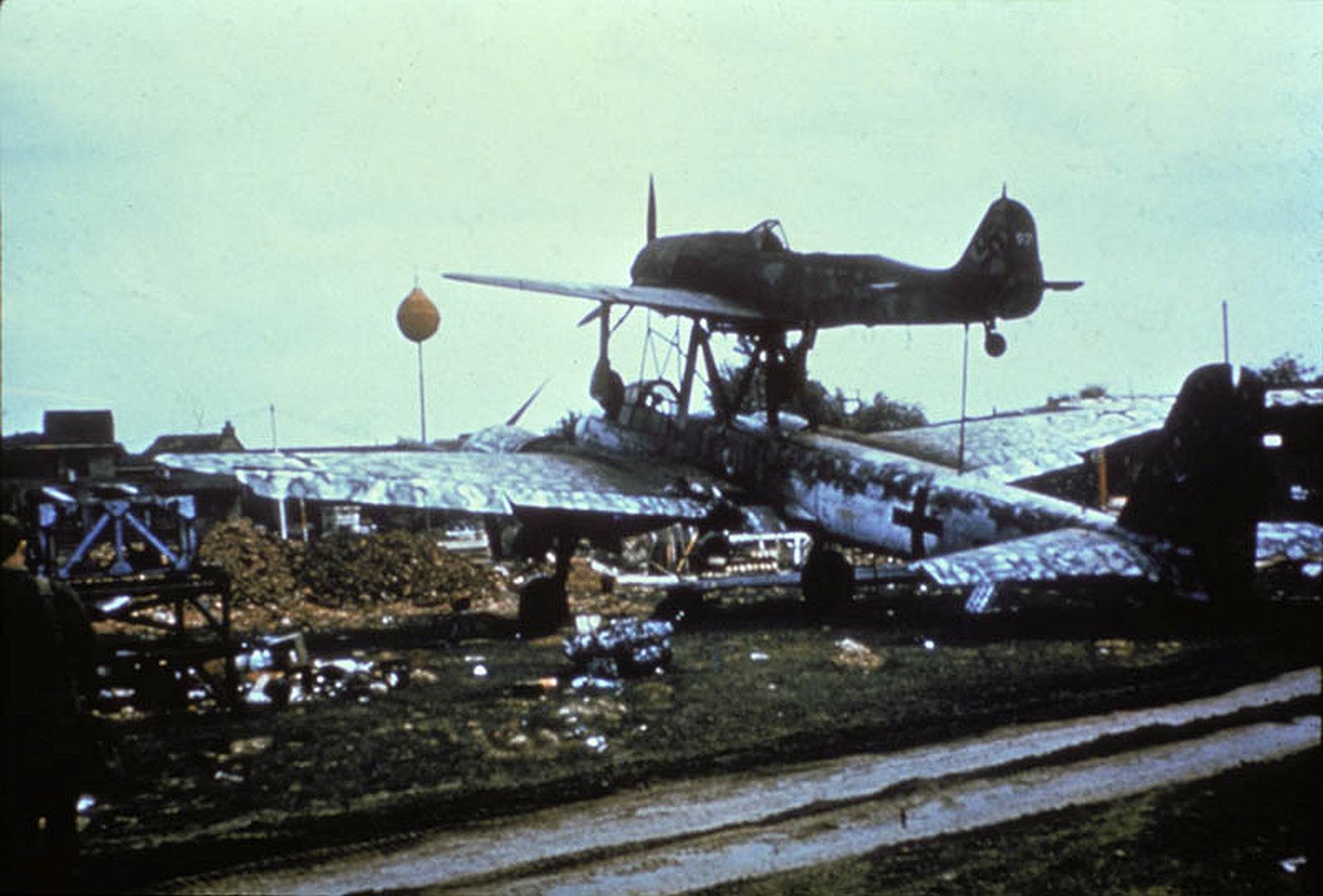
Mistel 4 - Ju 287 and Me 262
Mistel 5 - Arado E.377A and He 162
Post a reply
- Go to Previous topic
- Go to Next topic
- Go to Welcome
- Go to Introduce Yourself
- Go to General Discussion
- Go to Screenshots, Images and Videos
- Go to Off topic
- Go to Works in Progress
- Go to Skinning Tips / Tutorials
- Go to Skin Requests
- Go to IJAAF Library
- Go to Luftwaffe Library
- Go to RAF Library
- Go to USAAF / USN Library
- Go to Misc Library
- Go to The Ops Room
- Go to Made in Germany
- Go to Campaigns and Missions
- Go to Works in Progress
- Go to Juri's Air-Raid Shelter
- Go to Campaigns and Missions
- Go to Works in Progress
- Go to Skinpacks
- Go to External Projects Discussion
- Go to Books & Resources
